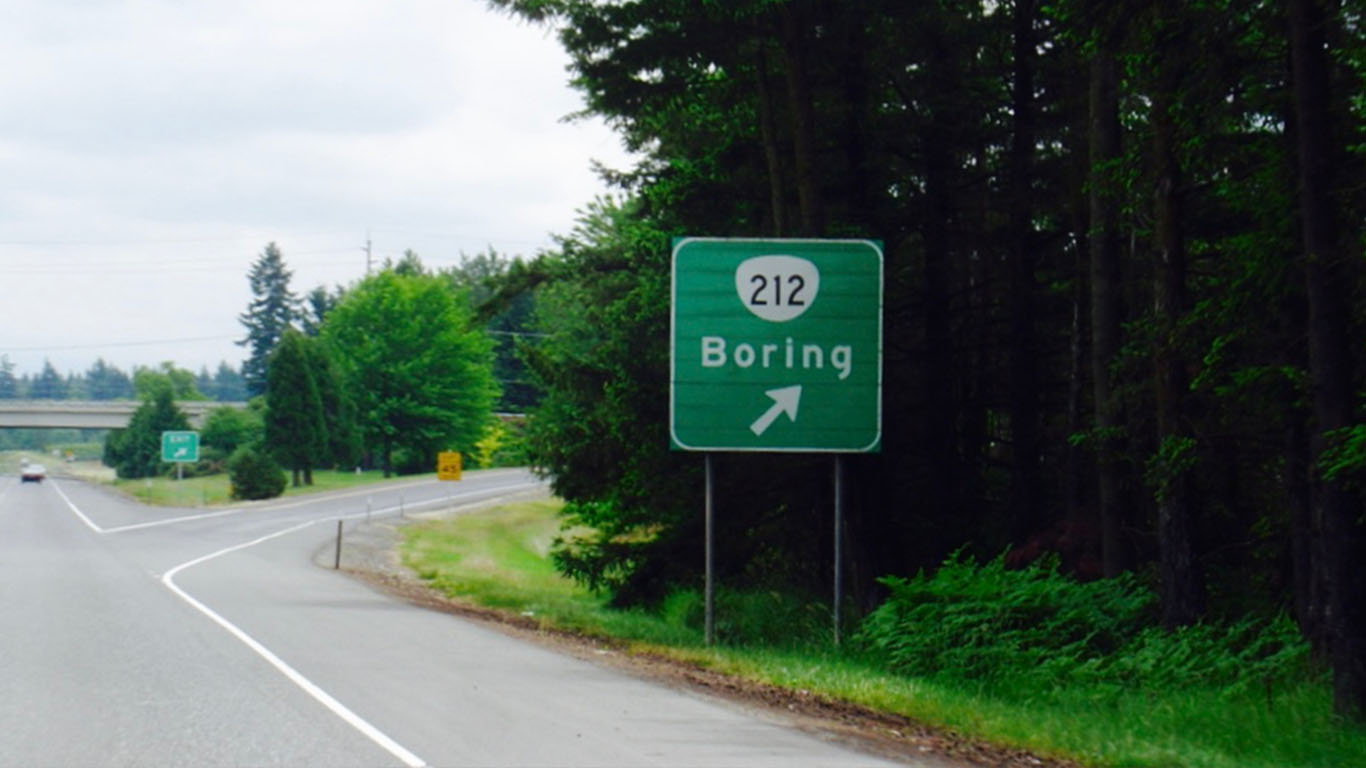
There are no rules for naming towns. Some are christened, reasonably enough, after their founders or a defining geographical feature. Others have monikers based on other languages or they may pay homage to religious figures. And then there are some places whose names seem completely random, with those naming the towns likely succumbing to boredom, silliness, or simply impatience.
These town names often have intricate — sometimes amusing, sometimes unlikely — origin stories. While some names are funny, others are just plain strange. Of course, “strange” is a matter of opinion.
24/7 Tempo attempted to identify the strangest in each state. Our editors chose the names often because they are just different. Other times, names were chosen because of their odd history or because they’re hard to say — here are 50 town names most Americans will struggle to pronounce.
Residents of towns often brag or joke about what they’re called. And of course, there are those who dispute or deny the etymologies. The list is intended for those who enjoy the unexpected, and we’re pretty confident that these are all town names that will make you think twice.
Click here to see the 30 strangest town names in America.
Click here to see our full methodology.
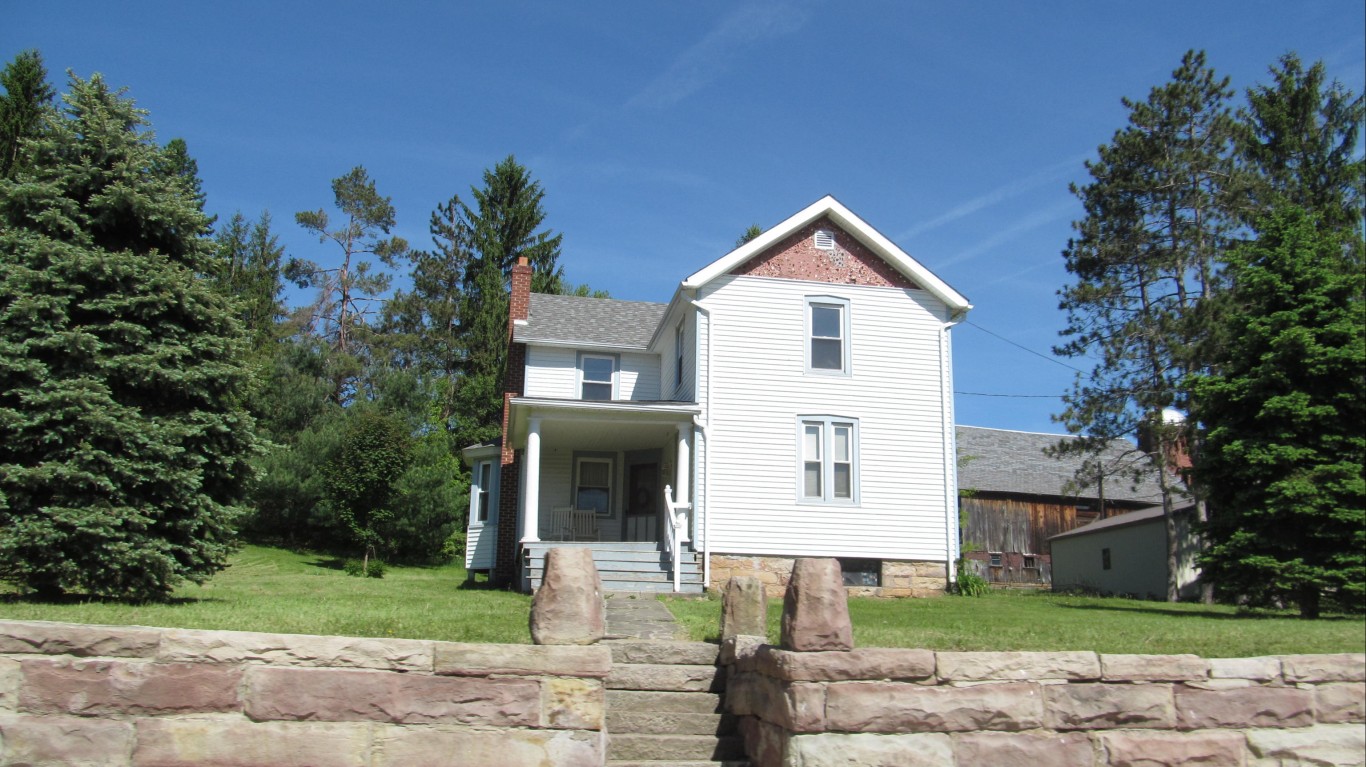
1. Accident, Maryland
> Municipal status: Town
> Population: 244
In 1786, when land speculator William Deakins, Jr., was granted the patent, or official land grant, to the tract where this town now stands, he called it “Accident.” According to local lore, this was because he and another speculator, Brooke Beall, had accidentally surveyed the same tract simultaneously.
[in-text-ad]
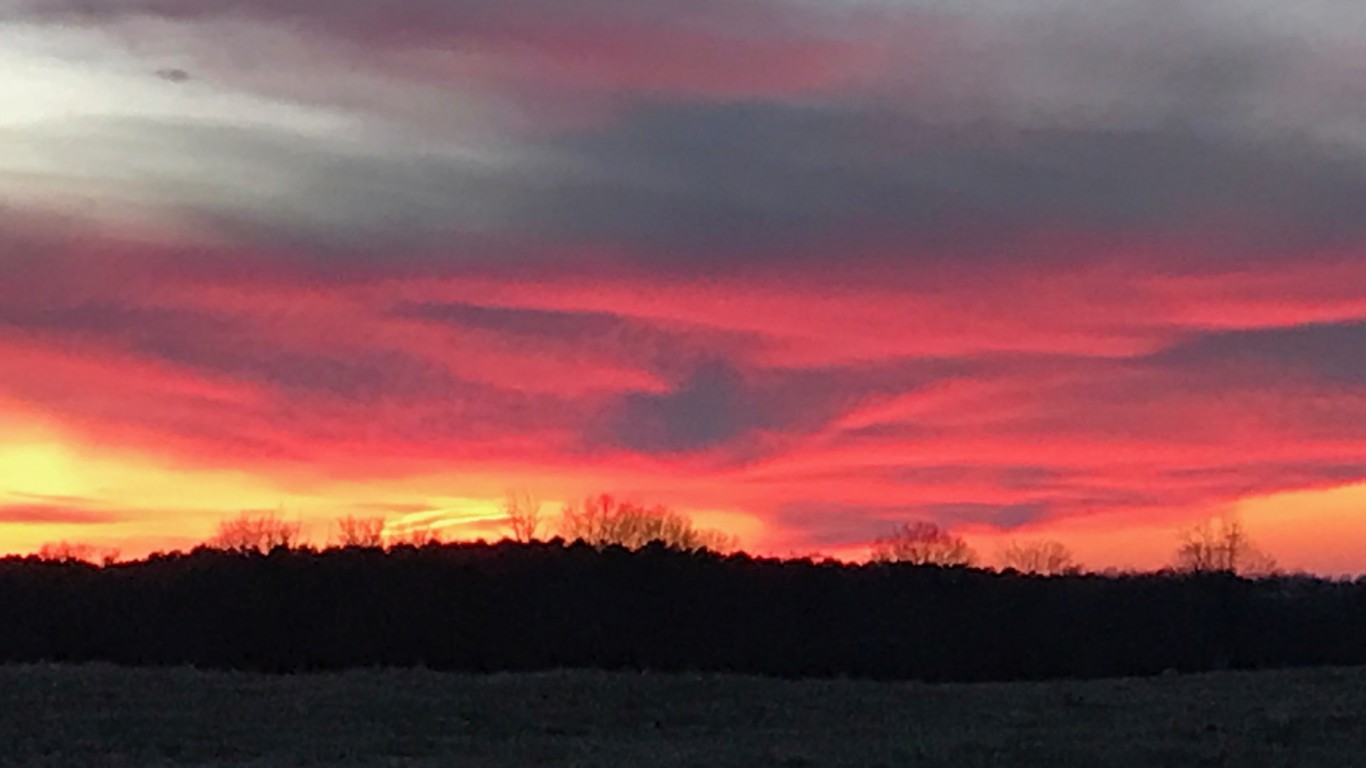
2. Arab, Alabama
> Municipal status: City
> Population: 8,234
The city of Arab (pronounced “ey-rab”) has no Middle Eastern connections. It got its name through a typographical error. After a village grew up around mid-19th-century settler Stephen Tuttle Thompson’s farm, Thompson asked the federal government to open a local post office. He offered three possible names for it: Ink, Blue Bird, and Arad, the last of these for his son Ranson Arad Thompson. Whoever processed the application chose Arad — but misspelled it “Arab,” and the name stuck.
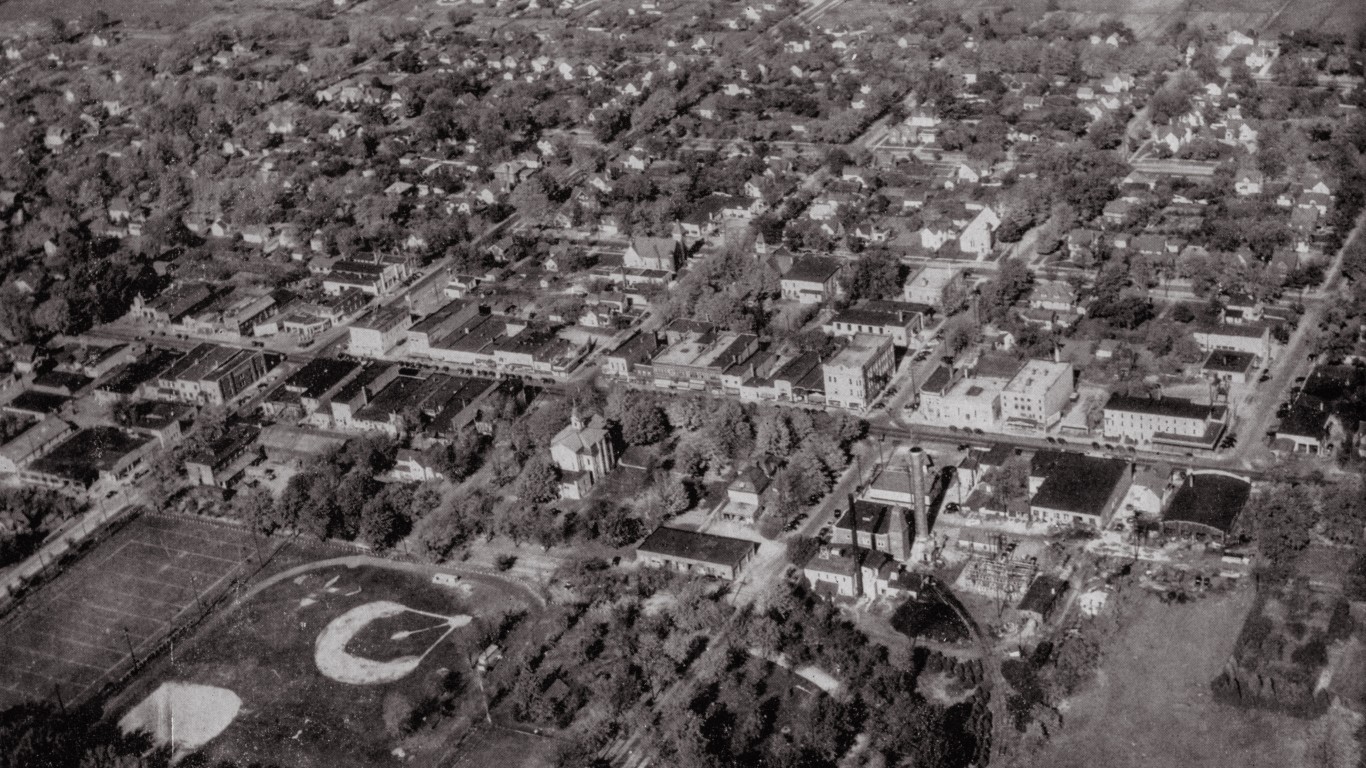
3. Bad Axe, Michigan
> Municipal status: City
> Population: 2,980
Planning the first state road through Michigan’s Huron County in the early 1860s, surveyors Rudolph Papst and George Willis Pack established a camp site where the city is now. They called it “Bad Axe Camp,” after an old axe they found there. They used the name both in their record of their journey and on a sign on the trail. By the time Papst returned to the area following the Civil War, the name “Bad Axe” was being used officially on local maps.
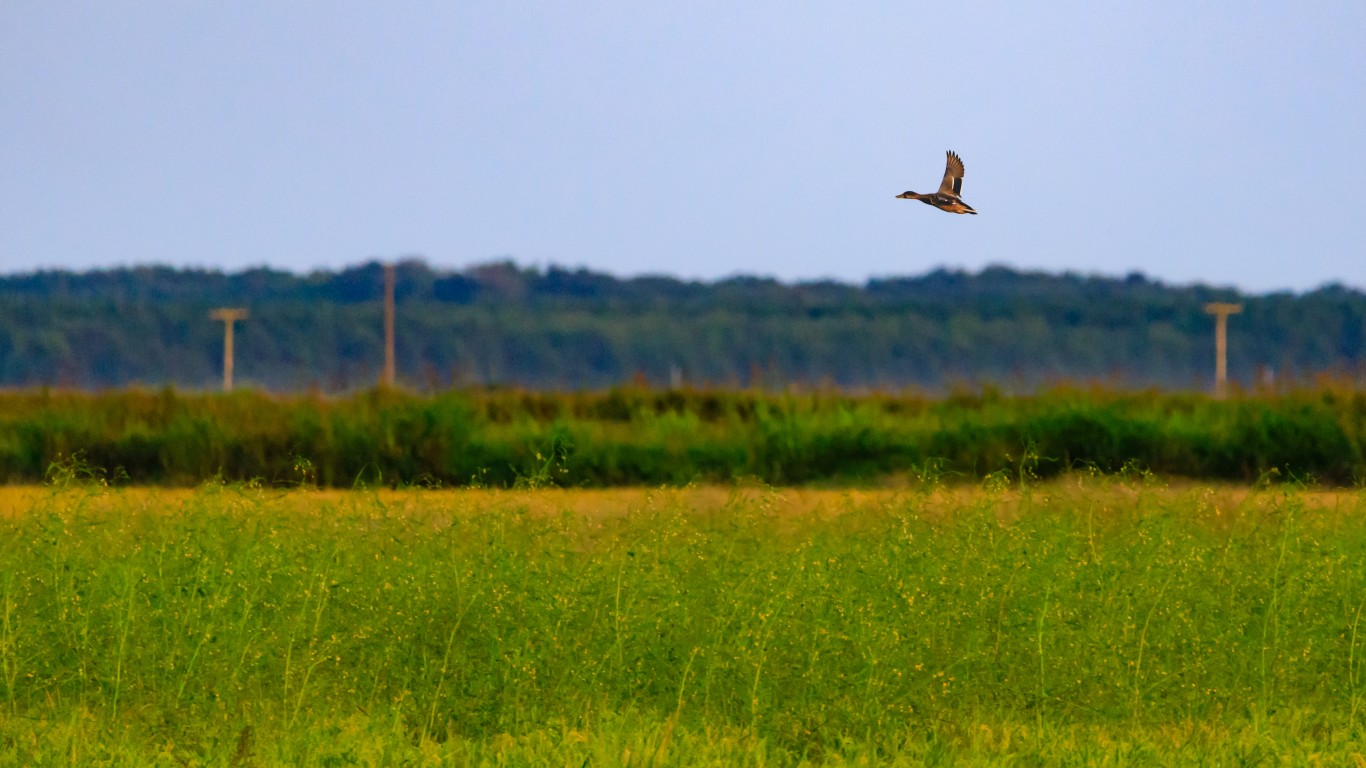
4. Bald Knob, Arkansas
> Municipal status: City
> Population: 2,891
Local legend maintains that Spanish explorer and conquistador Hernando de Soto was the first to describe the immense rock outcropping above the site of this city as a “bald knob” (though presumably in Spanish). One of the community’s founders, Benjamin Franklin Brown, posted a sign reading “Bald Knob” along the railroad tracks in the early 1870s. Beginning in 1877, the layered stone knob itself was quarried for railroad ballast. The following year, Bald Knob got its first post office, firmly establishing the name.
[in-text-ad-2]
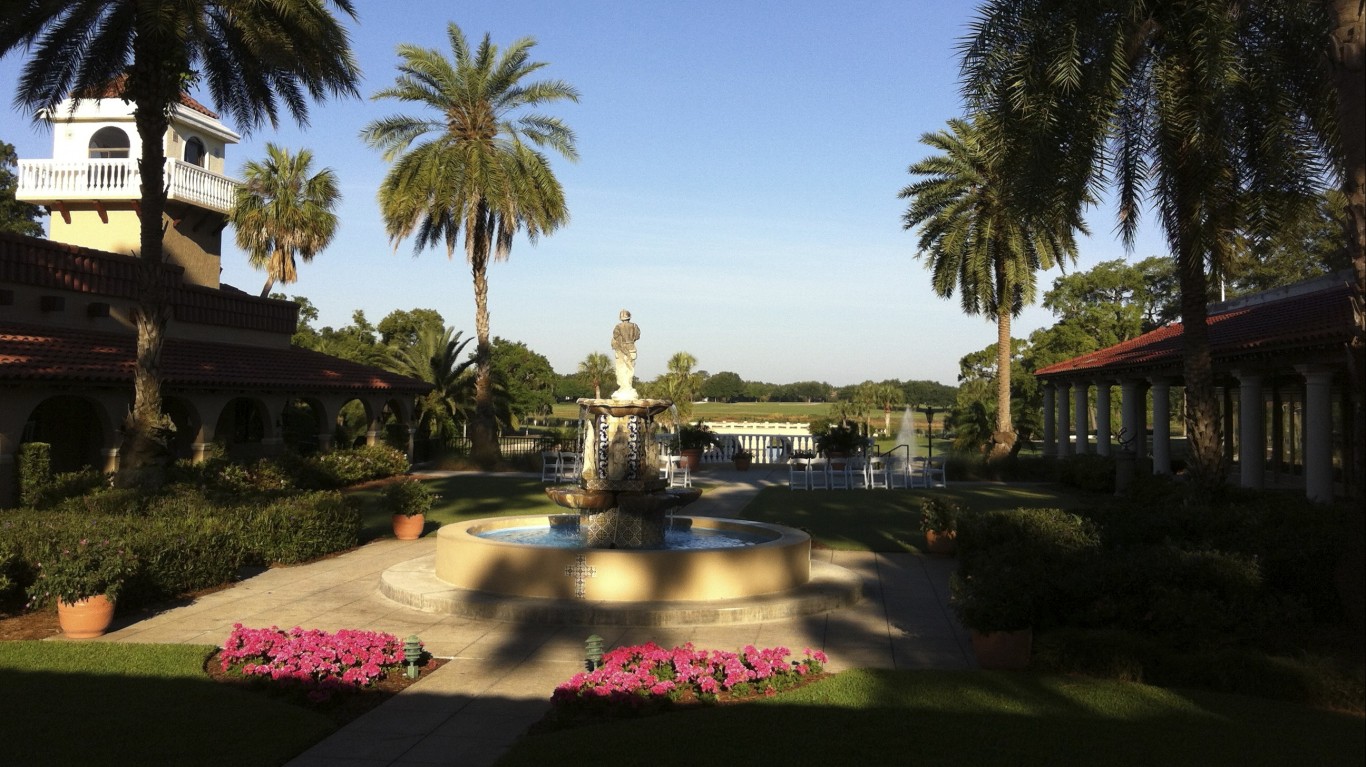
5. Howey-in-the-Hills, Florida
> Municipal status: Town
> Population: 1,462
The town, founded by William John Howey, was incorporated as Howey in 1925. It got its new name two years later to reflect the rolling hills and lakes, which Howey nicknamed “the Florida Alps.”
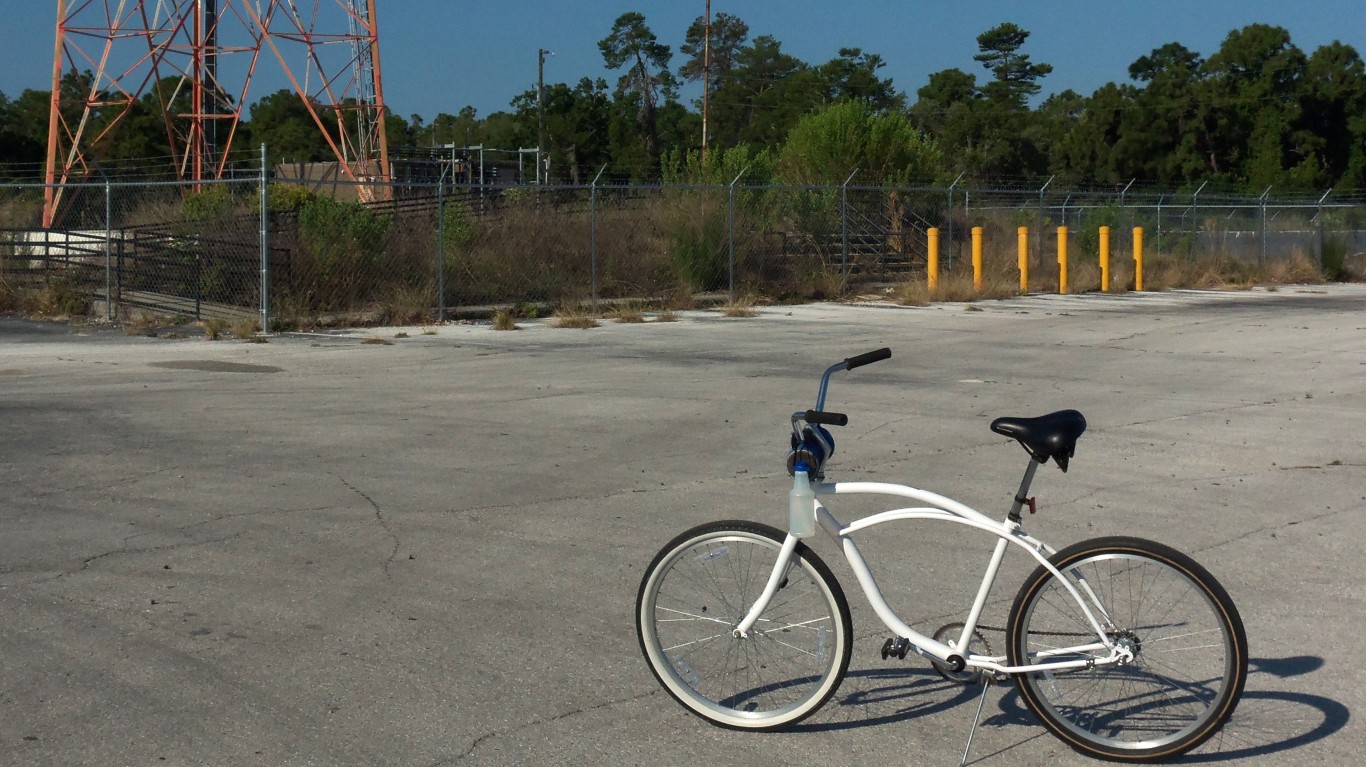
6. Bayonet Point, Florida
> Municipal status: Census designated place
> Population: 26,740
This dangerous-sounding moniker in fact derives from a plant called Spanish bayonet, a kind of yucca, which grew on the site. The name appears for the first time in 1900 on a Florida State Geological Survey map.
[in-text-ad]
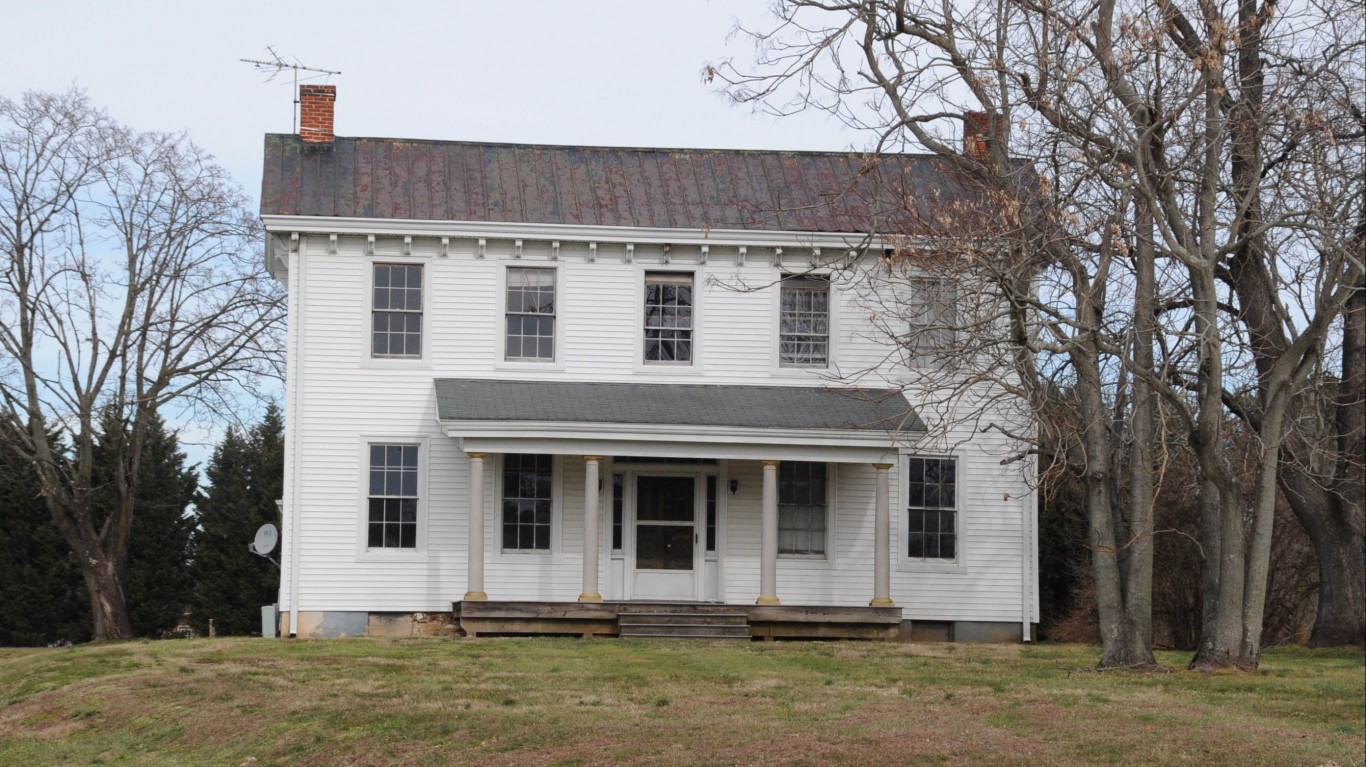
7. Bear, Delaware
> Municipal status: Census designated place
> Population: 21,362
A Colonial-era tavern called The Bear, located somewhere in the area, lent its name to this community. George Washington is said to have stopped at the tavern, which shut down in 1845 and was later torn down. Its name survived on the local railroad station and then the post office.
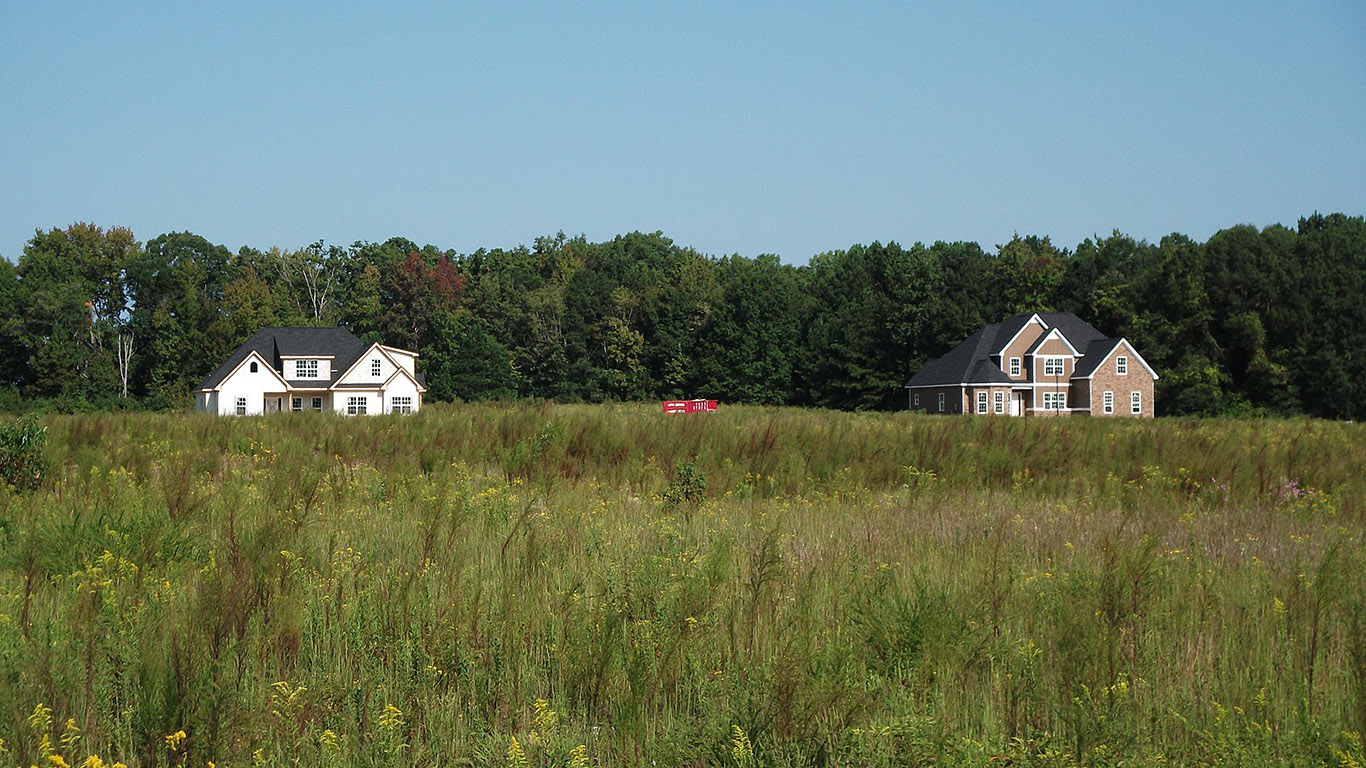
8. Between, Georgia
> Municipal status: Town
> Population: 328
One George Schaeffer, whose wife was the postmaster of nearby Monroe, reportedly chose the name for this community because it was approximately midway between Monroe and the town of Loganville.
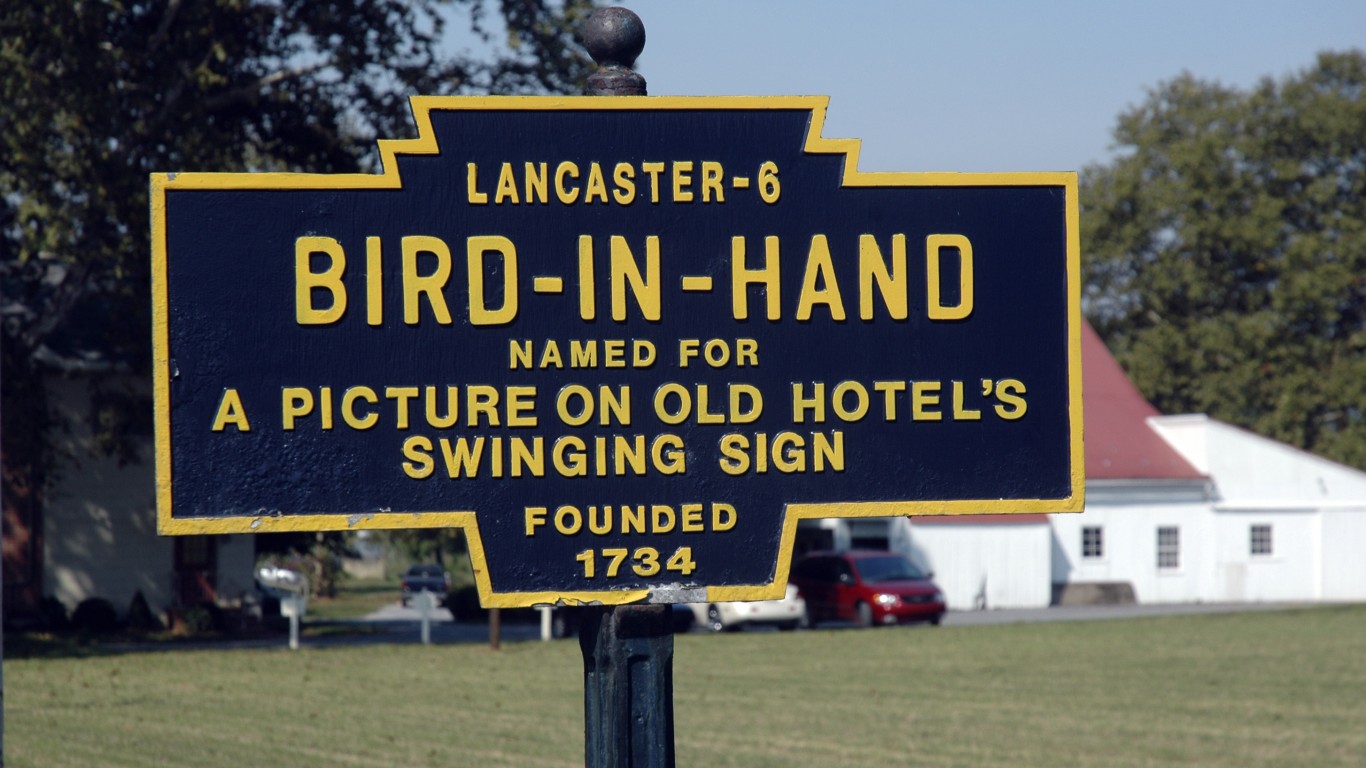
9. Bird-in-hand, Pennsylvania
> Municipal status: Census designated place
> Population: 508
A popular theory about Bird-in-Hand’s name origin has to do with inns. In the early 18th century, the people visiting the area spoke various languages, so locals named their inns after images everyone could understand. One such image was a hand holding a bird. At the time, communities that grew around inns often took the name of the inn because it was the most recognizable place in the area.
[in-text-ad-2]
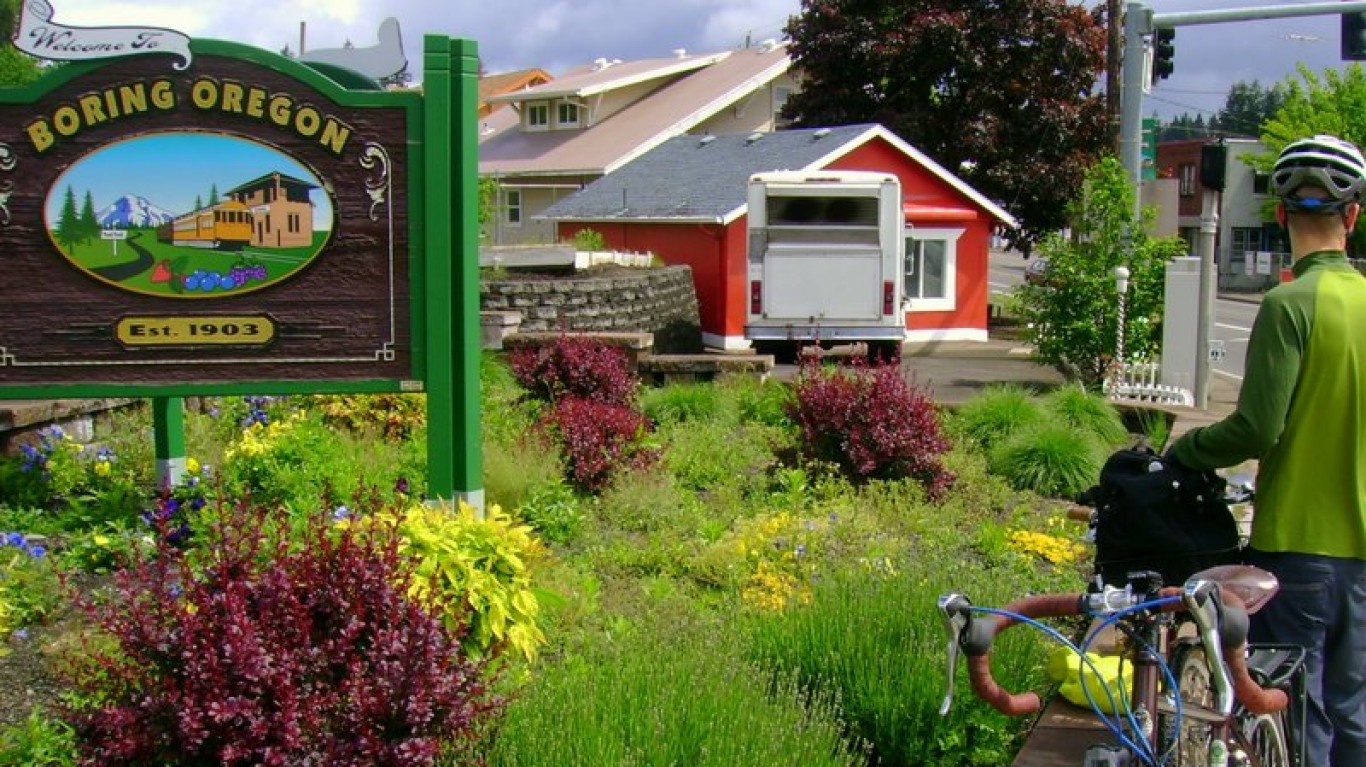
10. Boring, Oregon
> Municipal status: Unincorporated
> Population: 8,000
Stifle that yawn. The community of Boring — originally Boring Junction — was named for Civil War veteran William Harrison Boring, who donated the land for its first schoolhouse and lent his name to the local hotel and Grange chapter, among other things.
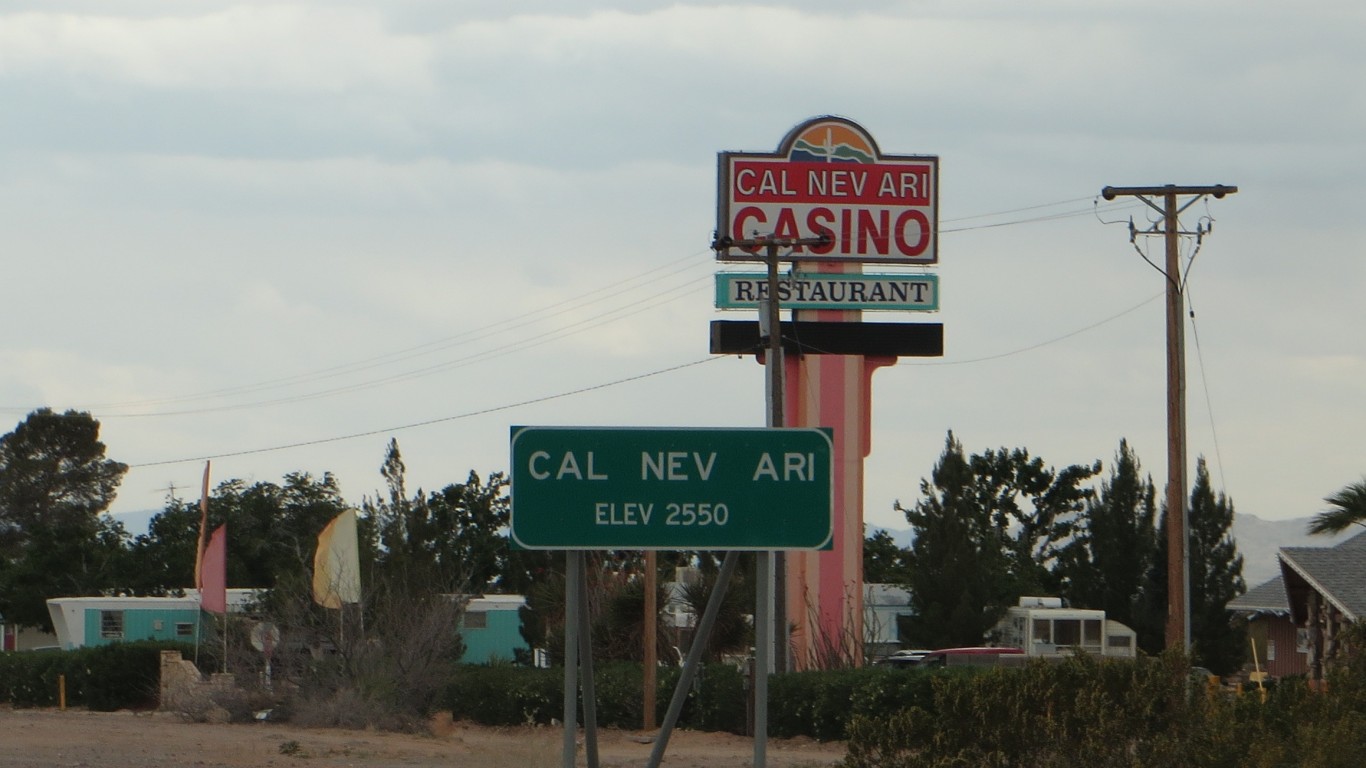
11. Cal-Nev-Ari, Nevada
> Municipal status: Census designated place
> Population: 119
This site was originally known as Stage Field and was an airfield for World War II army training center Camp Ibis. After the camp was closed, an airport operator, Slim Kidwell, flew over the area and thought it had development possibilities. He and his wife, Nancy, took possession of the property in 1965, naming it in recognition of its home state and its proximity to the California and Arizona borders. They built an airstrip, casino, motel, restaurant, and bar, among other features.
[in-text-ad]
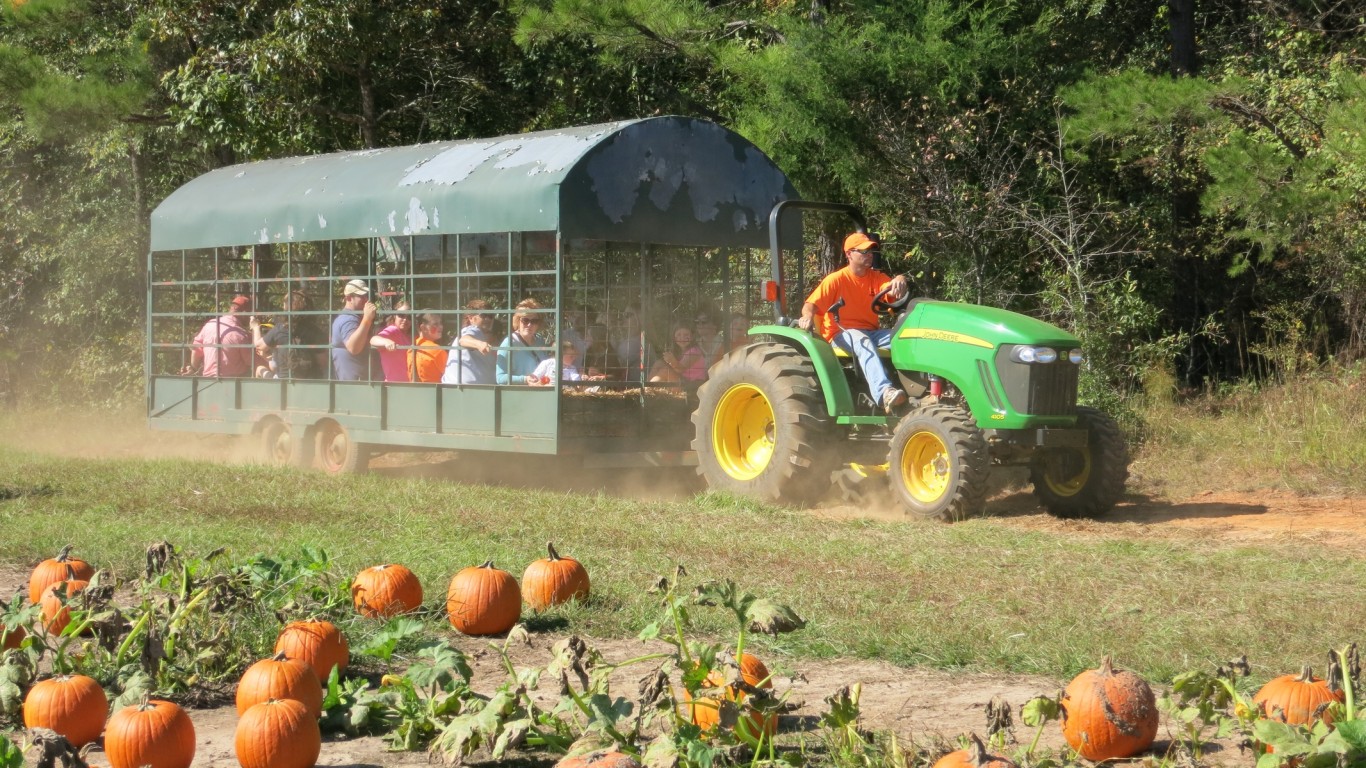
12. Chunky, Mississippi
> Municipal status: Town
> Population: 415
Chunkyville was village established before 1848 on the site of a former Choctaw settlement called Chanki Chitto. In 1861, after it was announced that planned railroad tracks would pass several miles north of the village, most of its citizens moved close to where it would pass and called their new town simply Chunky.
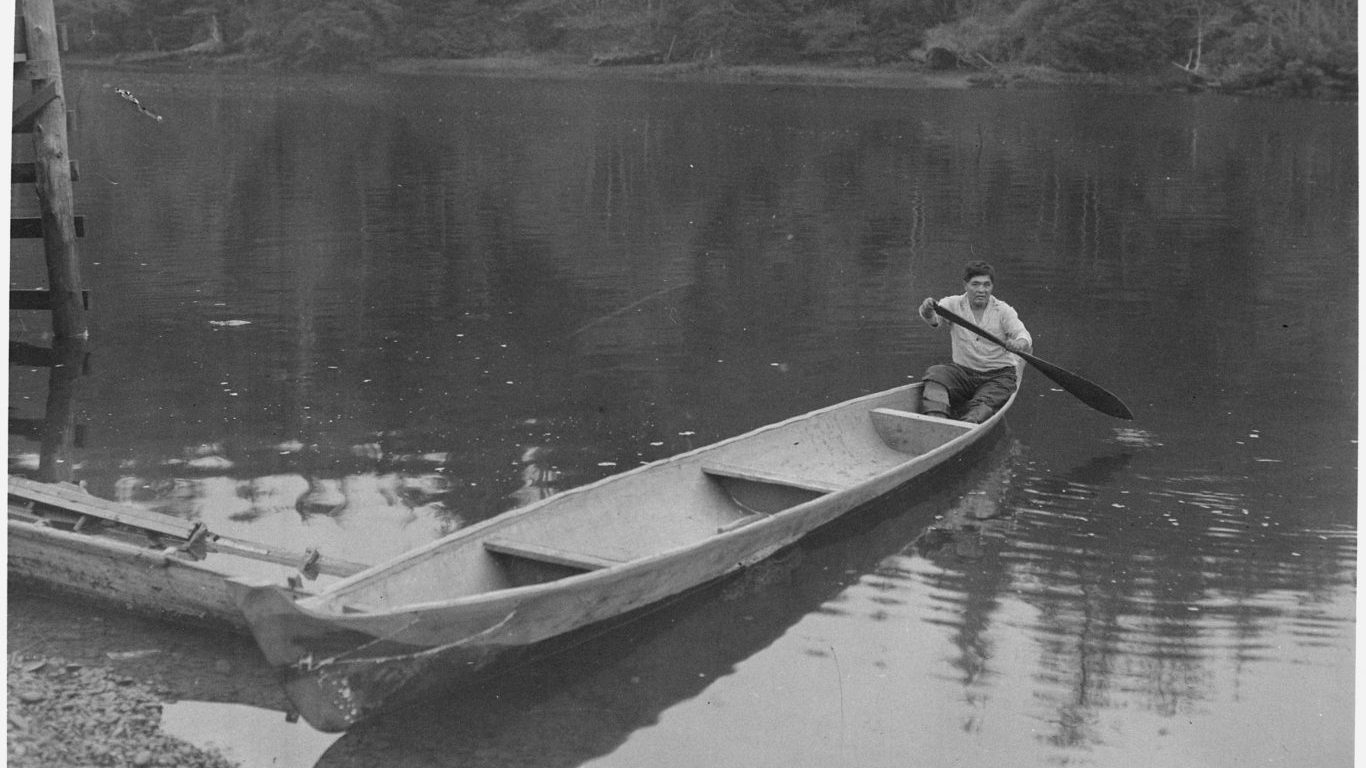
13. Qui-nai-elt Village, Washington
> Municipal status: Census-designated place
> Population: 59
The community of Qui-nai-elt is located in the southwestern part of the Quinault Indian Nation, roughly 3 miles from the Pacific Ocean. About 97% of the area’s population identifies as Native American. The name “Quinault” has been anglicized from “kʷínayɬ,” which was the name of a village on the Quinault River, now called Taholah.
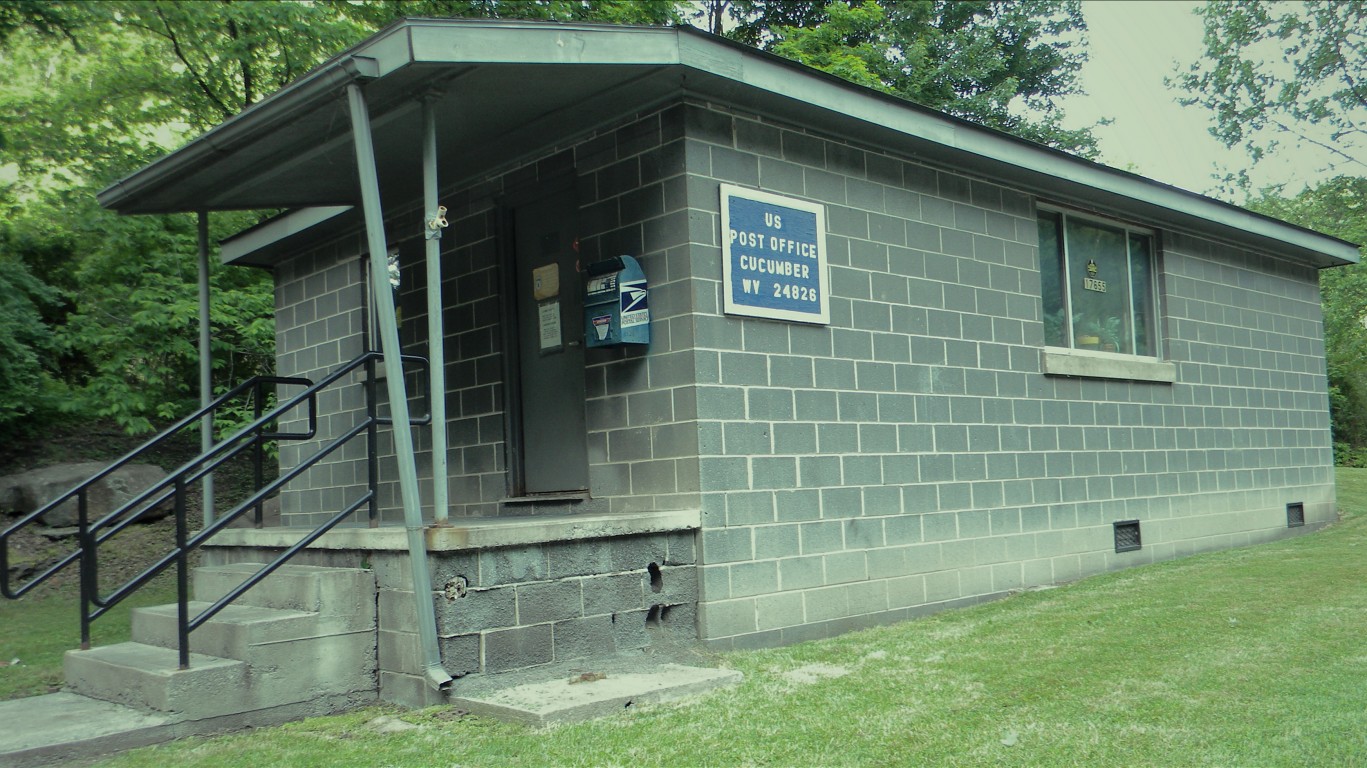
14. Cucumber, West Virginia
> Municipal status: Census designated place
> Population: 65
This community takes its name not from the familiar vegetable, but either from the so-called cucumber tree (sometimes written cucumbertree), Magnolia acuminata, which grows in the region, or from Cucumber Creek — itself likely named for the tree.
[in-text-ad-2]
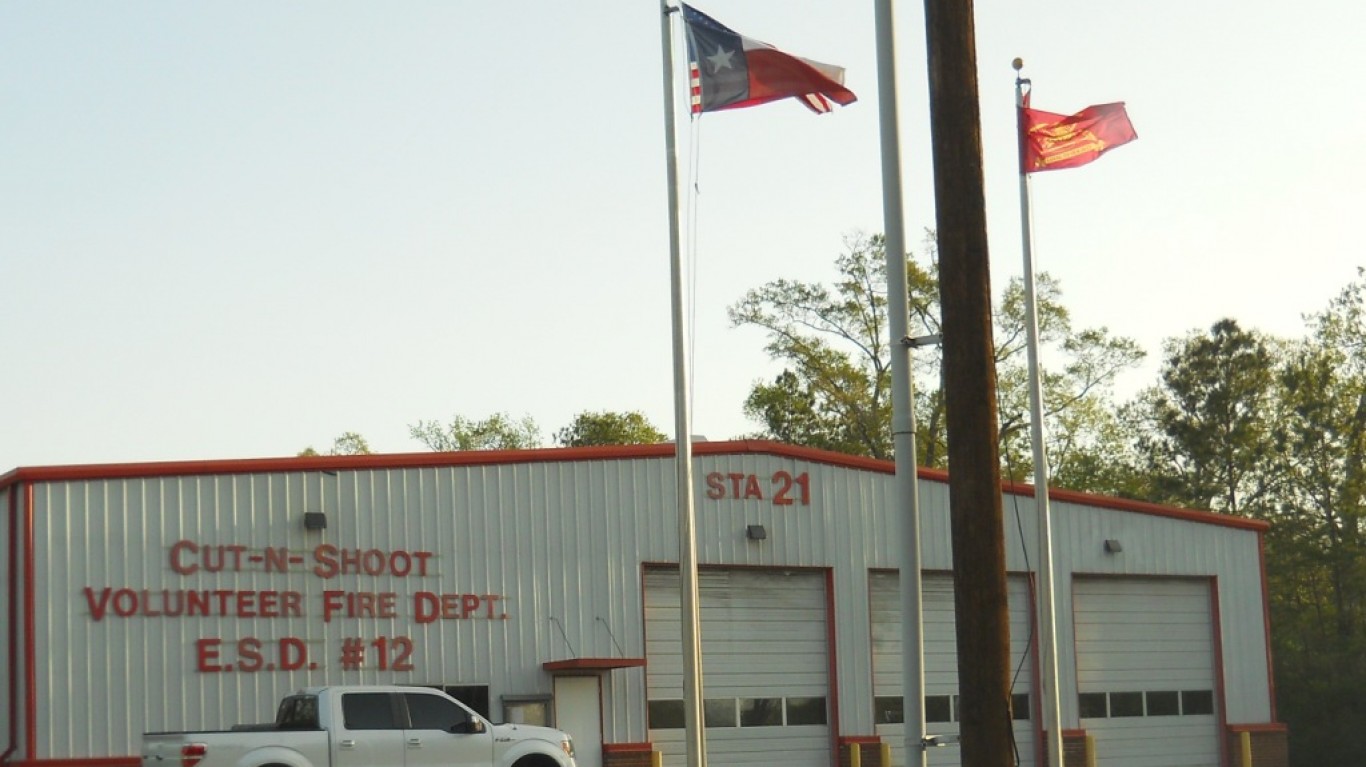
15. Cut and Shoot, Texas
> Municipal status: City
> Population: 1,313
Local legend has it that the name of this city derives from a disagreement in 1912 at the local church, with churchgoers arguing over land claims, or steeple design, or who the preacher should be. Whatever the source of the dispute, a small boy at the scene is said to have announced his annoyance with the goings-on by saying “I’m going to cut around the corner and shoot through the bushes in a minute.” Exactly when locals decided to name their settlement after the statement is not recorded.
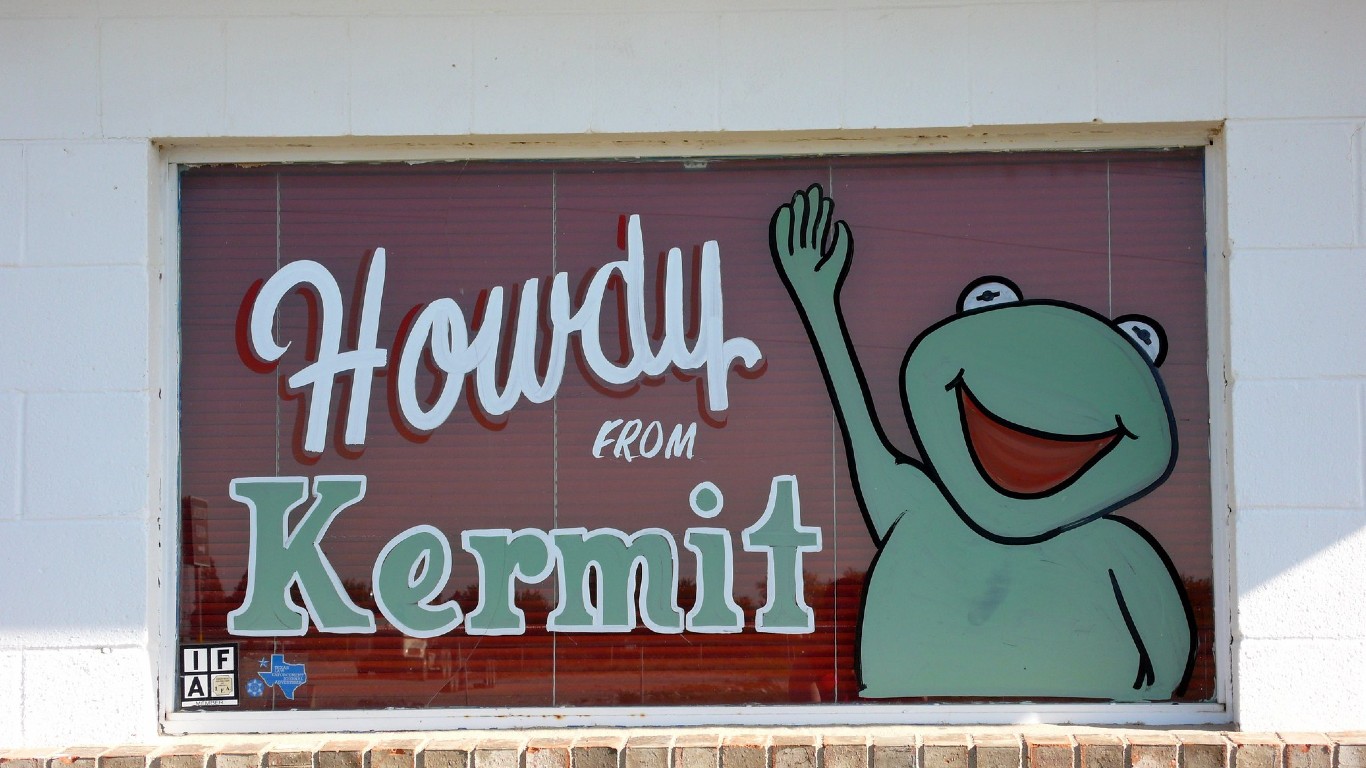
16. Kermit, Texas
> Municipal status: City
> Population: 6,614
Having a famous and beloved father may get some people a city named after them. Kermit, a city of about 6,600 people in eastern Texas, was named after Theodore Roosevelt’s son, Kermit Roosevelt. Kermit Roosevelt was frequently hunting in the area. The city has a Kermit the Frog-decorated water tower.
[in-text-ad]
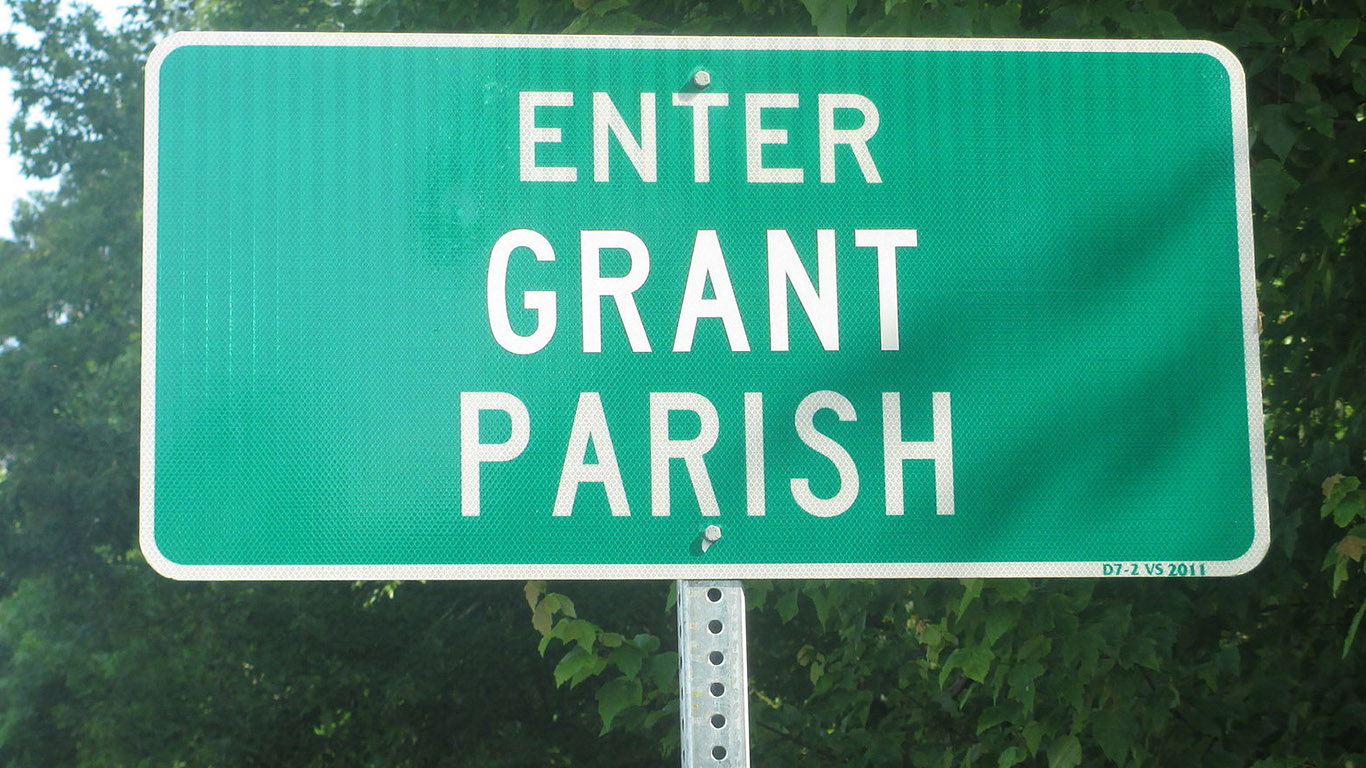
17. Dry Prong, Louisiana
> Municipal status: Village
> Population: 502
A prong, which we usually think of as the tine of a fork or part of an electrical plug, can also be one arm of a forked river. This village most likely takes its name from a creek that powered the local sawmill most of the year but dried up every summer.
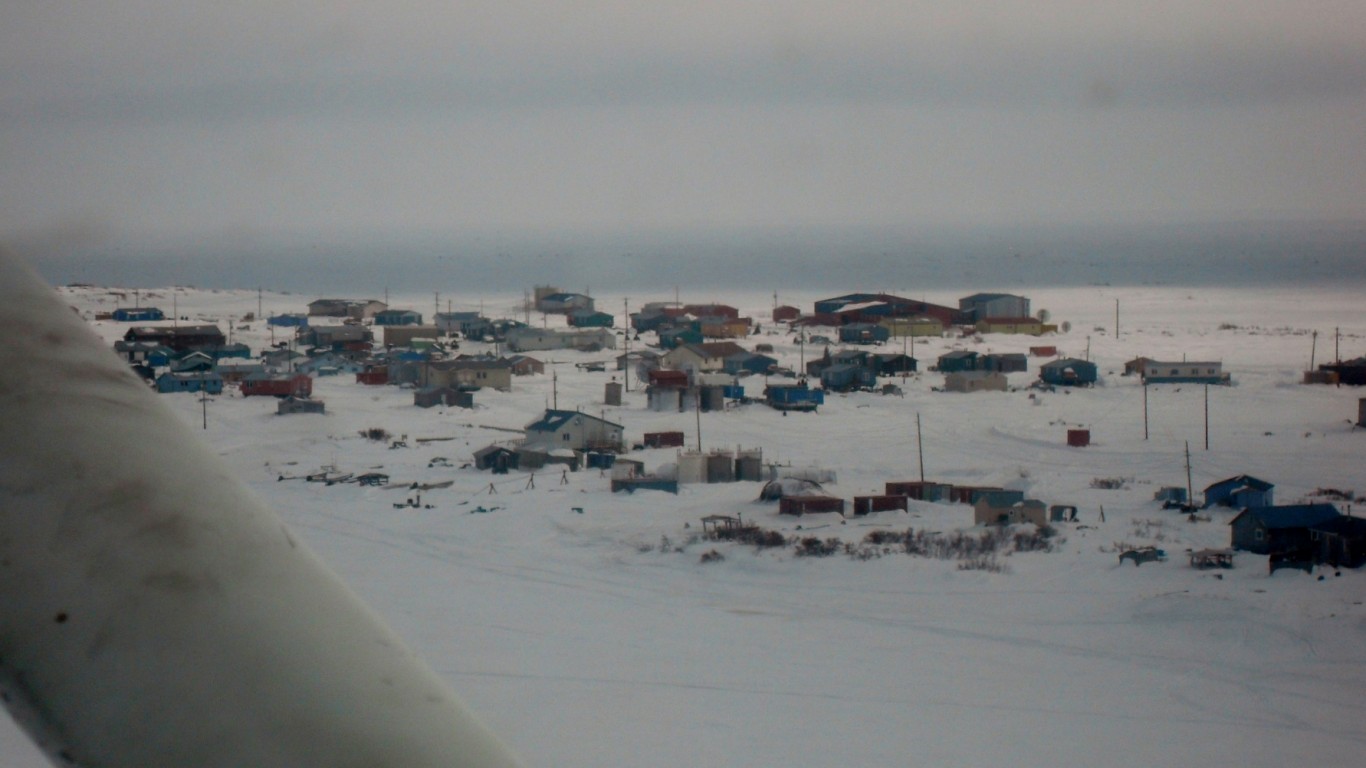
18. Eek, Alaska
> Municipal status: City
> Population: 491
Eek’s name may suggest the sound a frightened person makes, but it’s actually an anglicized corruption of the locality’s Central Yup’ik name, Ekvicuaq — literally ˚little cliff.”
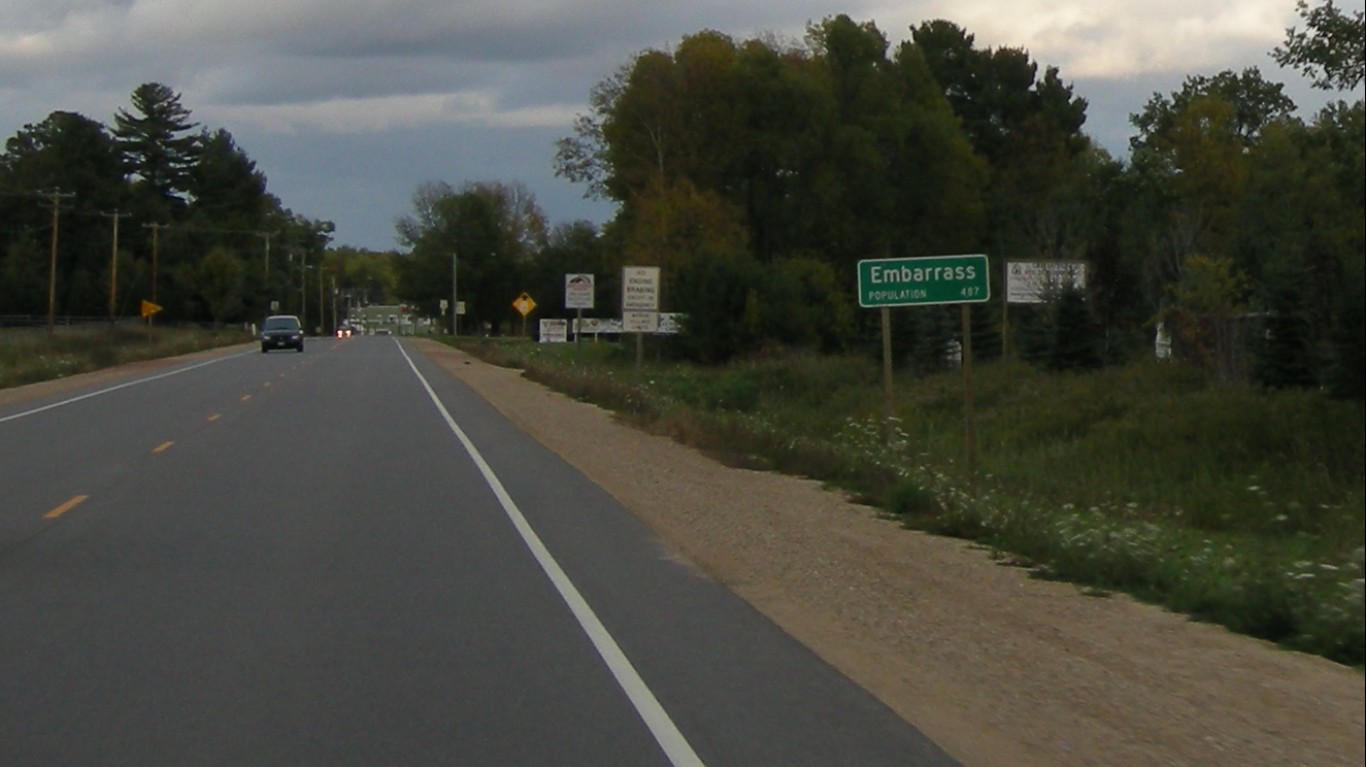
19. Embarrass, Wisconsin
> Municipal status: Village
> Population: 548
The French verb embarrasser can mean “to hamper,” “to stop,” or “to embangle [entangle].” The word is said to have been attached to this place by French-Canadian lumberjacks who found the nearby river almost impassable.
[in-text-ad-2]
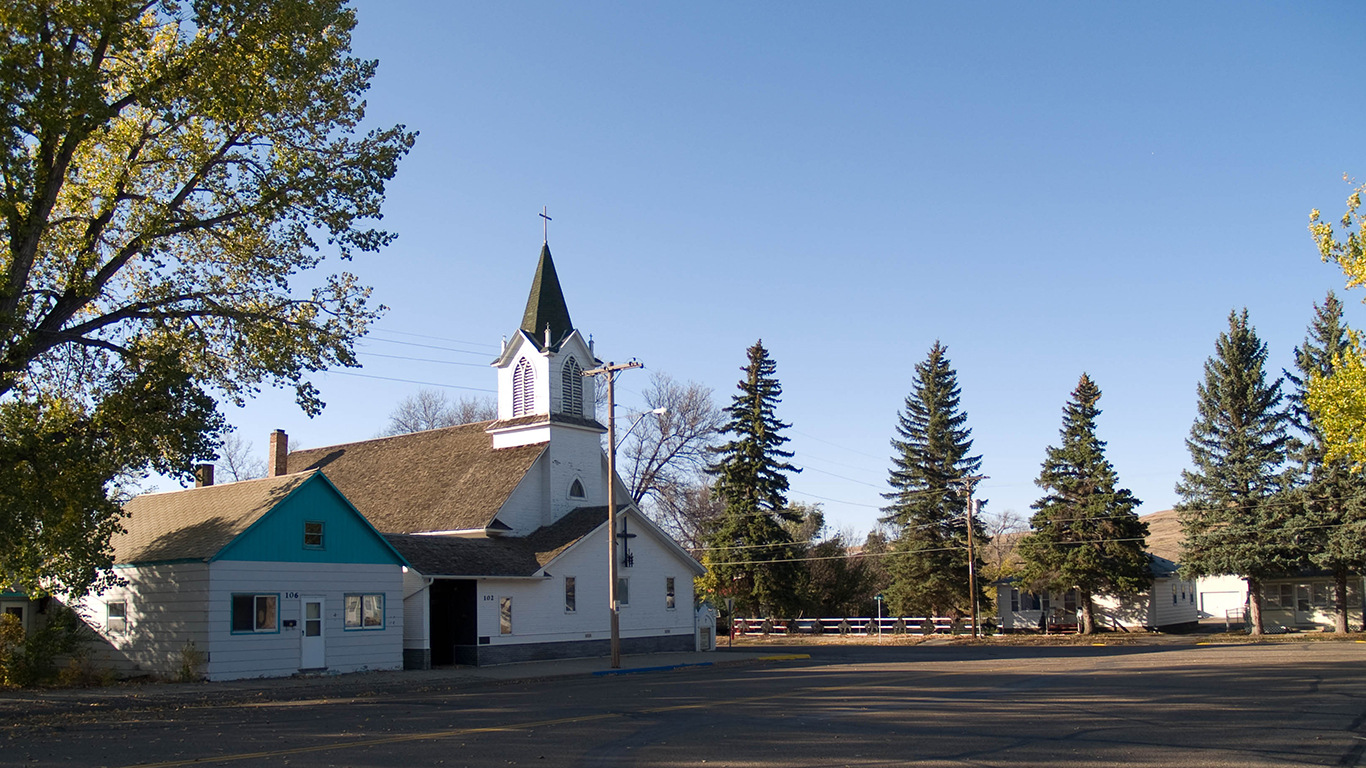
20. Zap, North Dakota
> Municipal status: City
> Population: 157
One version of the history of the city’s name is accepted as true. The city had a coal mine at the edge of town, and the official in charge of naming new areas at the time knew of a town with coal mines in Scotland that was named Zapp. So it only made sense to him to name the city with the same name, dropping one “p” as a way of Americanizing it.
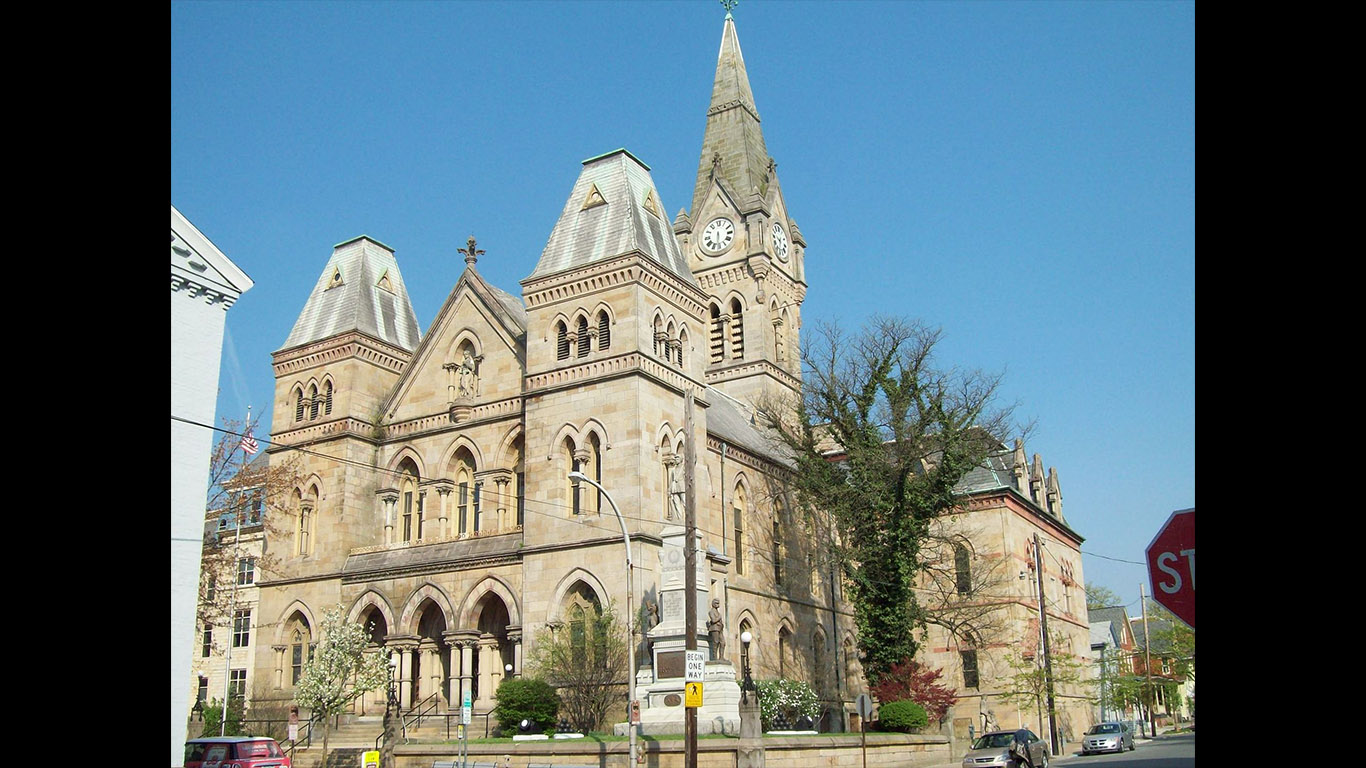
21. Foot of Ten, Pennsylvania
> Municipal status: Census designated place
> Population: 715
This community takes its name from its position at the base of the Number 10 plane (or incline) of the historic Allegheny Portage Railroad. The railroad was part of the network of canals and railways that made up the Pennsylvania Main Line of Public Works, which connected Philadelphia and Pittsburgh for much of the 19th century.
[in-text-ad]
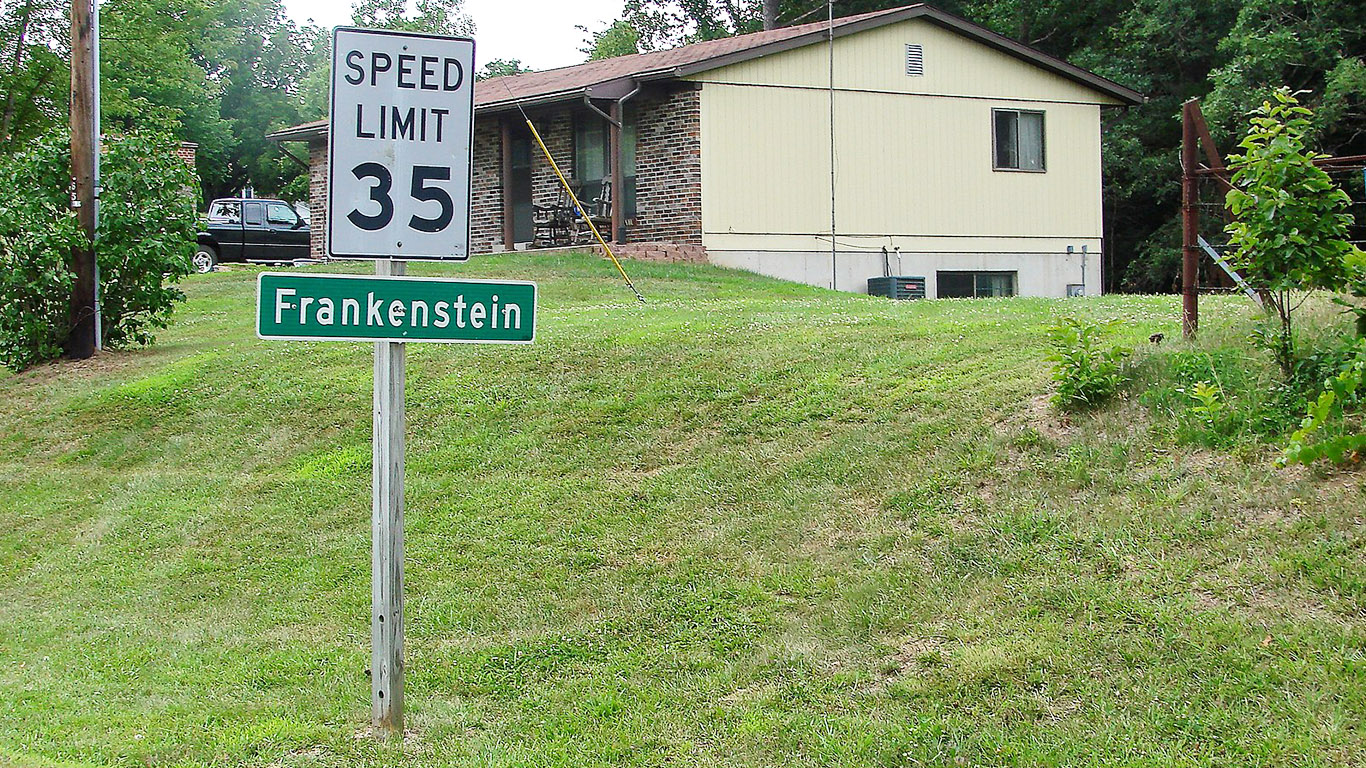
22. Frankenstein, Missouri
> Municipal status: Unincorporated
> Population: 50
There is no evidence that this community was named for Mary Shelley’s mad scholar (or for the man-creature he created, widely and mistakenly also called Frankenstein). The town was mostly likely so christened in honor of one Gottfried Franken, who donated land to the town in 1890. The tract became known as Franken Hill. “Stein” can mean rock, so the name may have simply been a fancy way of honoring the donor for his “rock,” or hill.
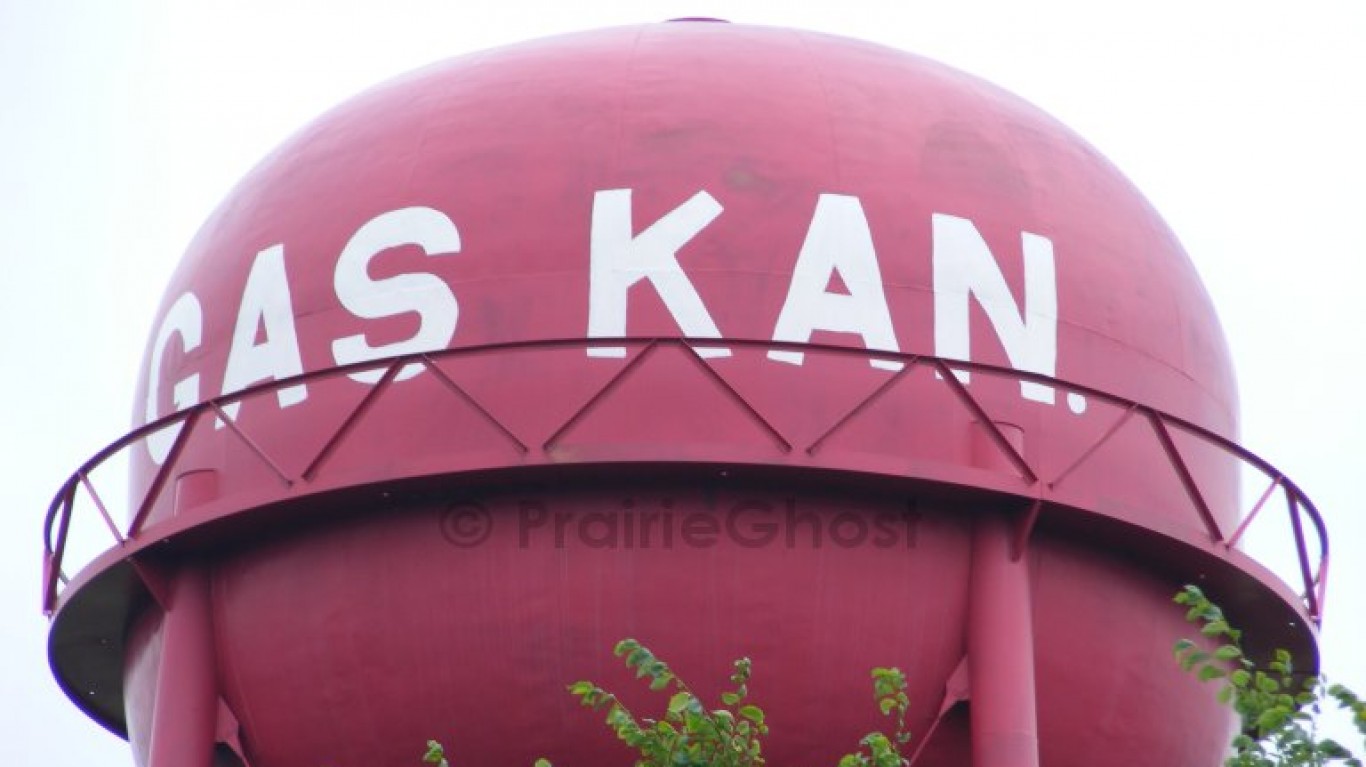
23. Gas, Kansas
> Municipal status: City
> Population: 488
In 1893, drillers discovered natural gas deposits here, which were described by Gas founder E. K. Taylor in local newspaper the Iola Register as “[N]atural Resources that will erect and maintain a City as solid as the Rock of Gibraltar.” Taylor planned the town, which he dubbed Gas City, and started selling residential and business lots in 1898. When he applied for a post office the following year, postal authorities asked him to drop “City” from the name, which he did.
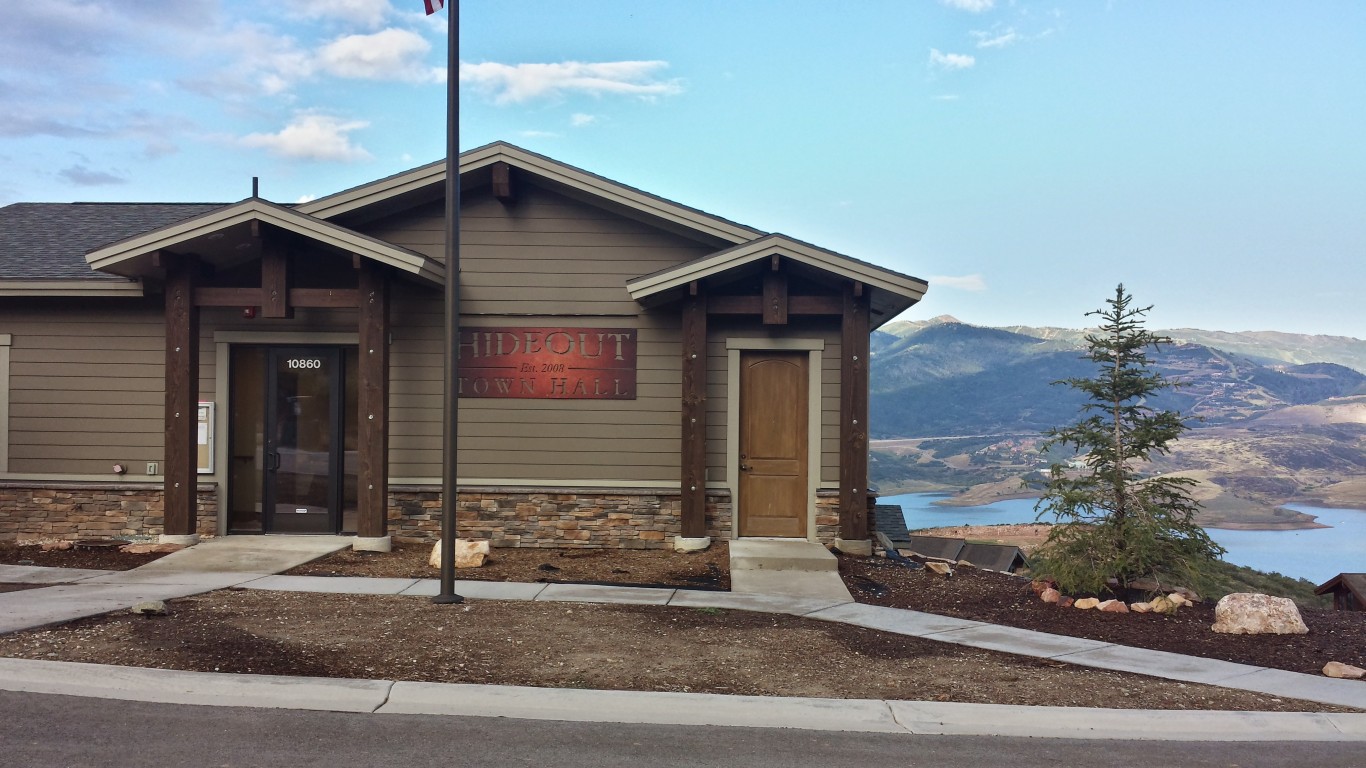
24. Hideout, Utah
> Municipal status: Town
> Population: 1,123
Hideout is a new town, established only in 2008. It’s named for an old landmark nearby, Hideout Canyon, which was called that because it was a popular hideout for rustlers and other outlaws in earlier days.
[in-text-ad-2]
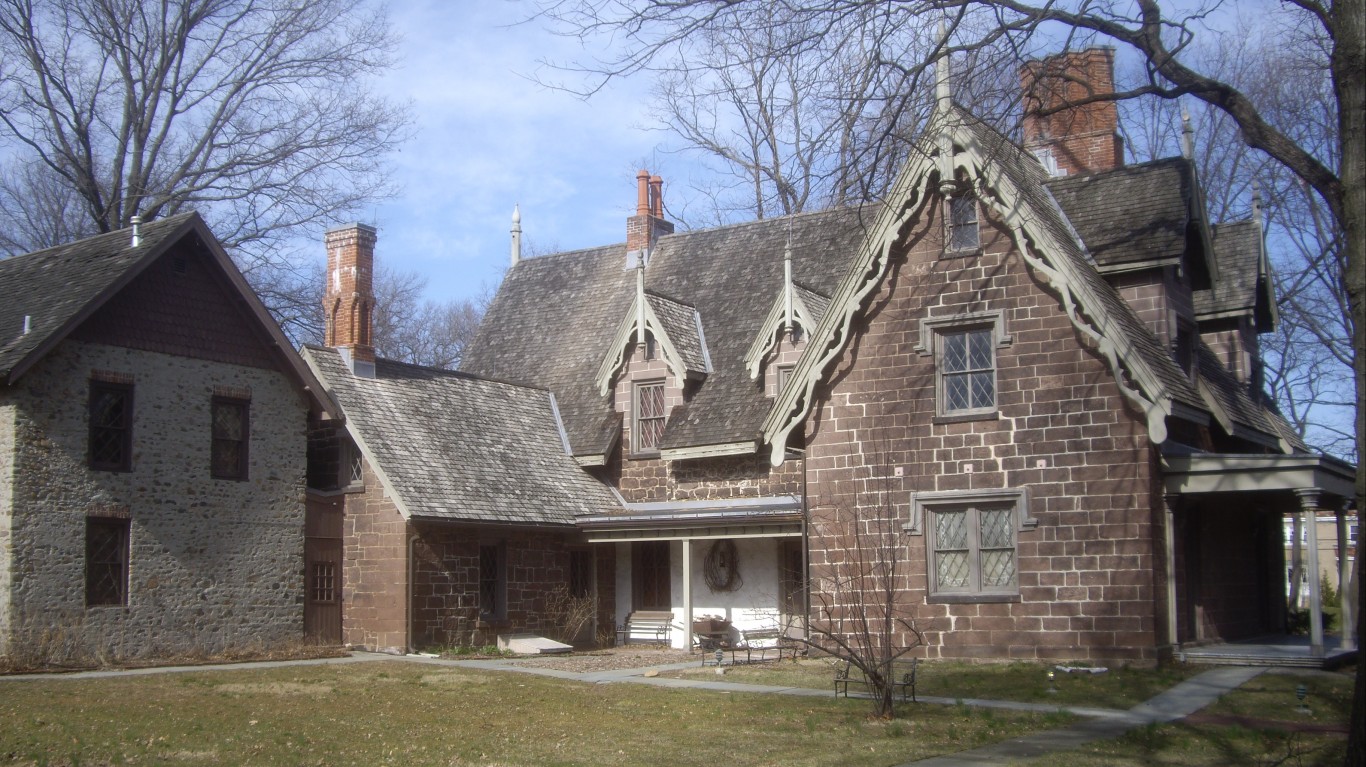
25. Ho-Ho-Kus, New Jersey
> Municipal status: Borough
> Population: 4,101
Where this New Jersey borough gets its name is a matter of some dispute. One theory links it to early Dutch settlers, who may have commented on its hoge eiken (hoge aukers, according to some versions), or high oak trees. More likely, it is a Native American term describing some feature of the local topography, flora, or fauna — possibly a Delaware word usually rendered as “mehokhokus,” meaning “red cedar.”
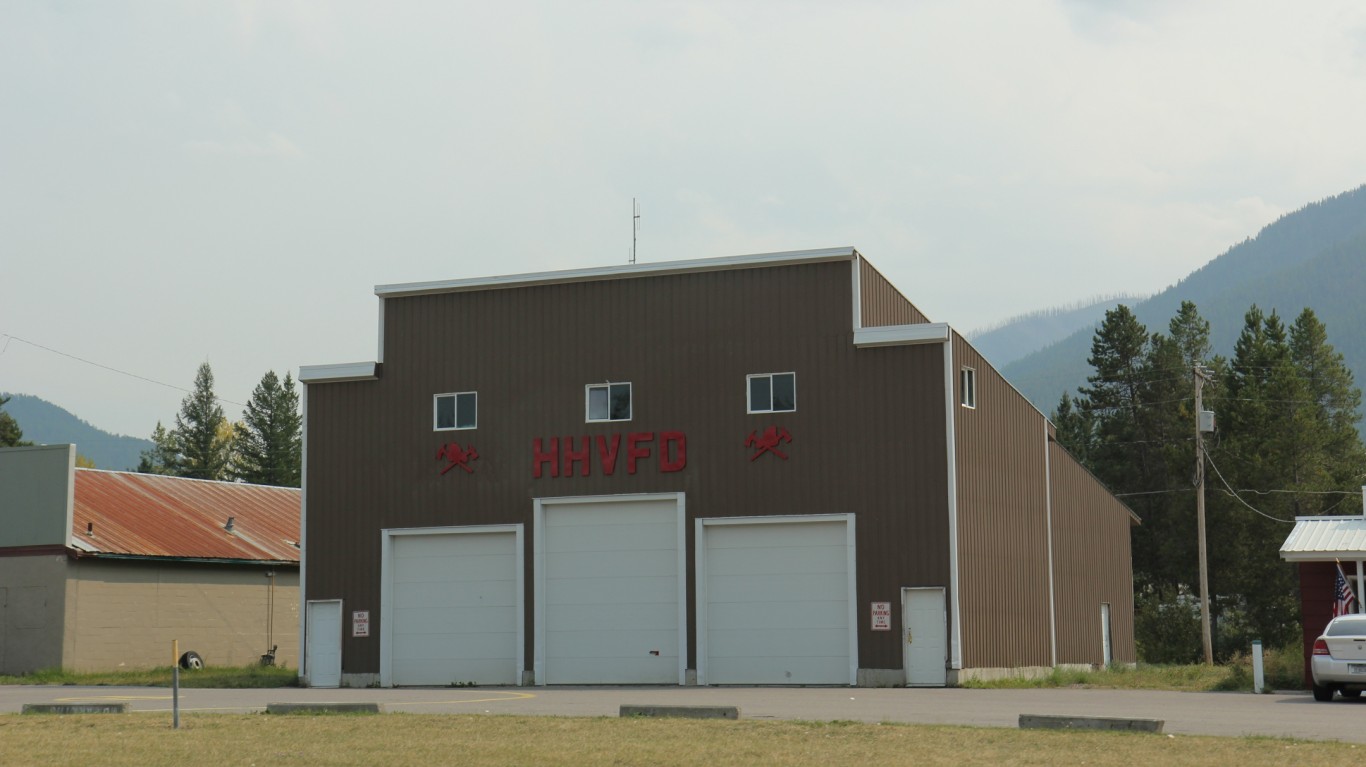
26. Hungry Horse, Montana
> Municipal status: Census designated place
> Population: 575
Hungry Horse and the nearby Hungry Horse Dam were named for two draft horses who got lost in the snow in the winter of 1900-01 and were found weak and starving a month later. They were nursed back to health.
[in-text-ad]
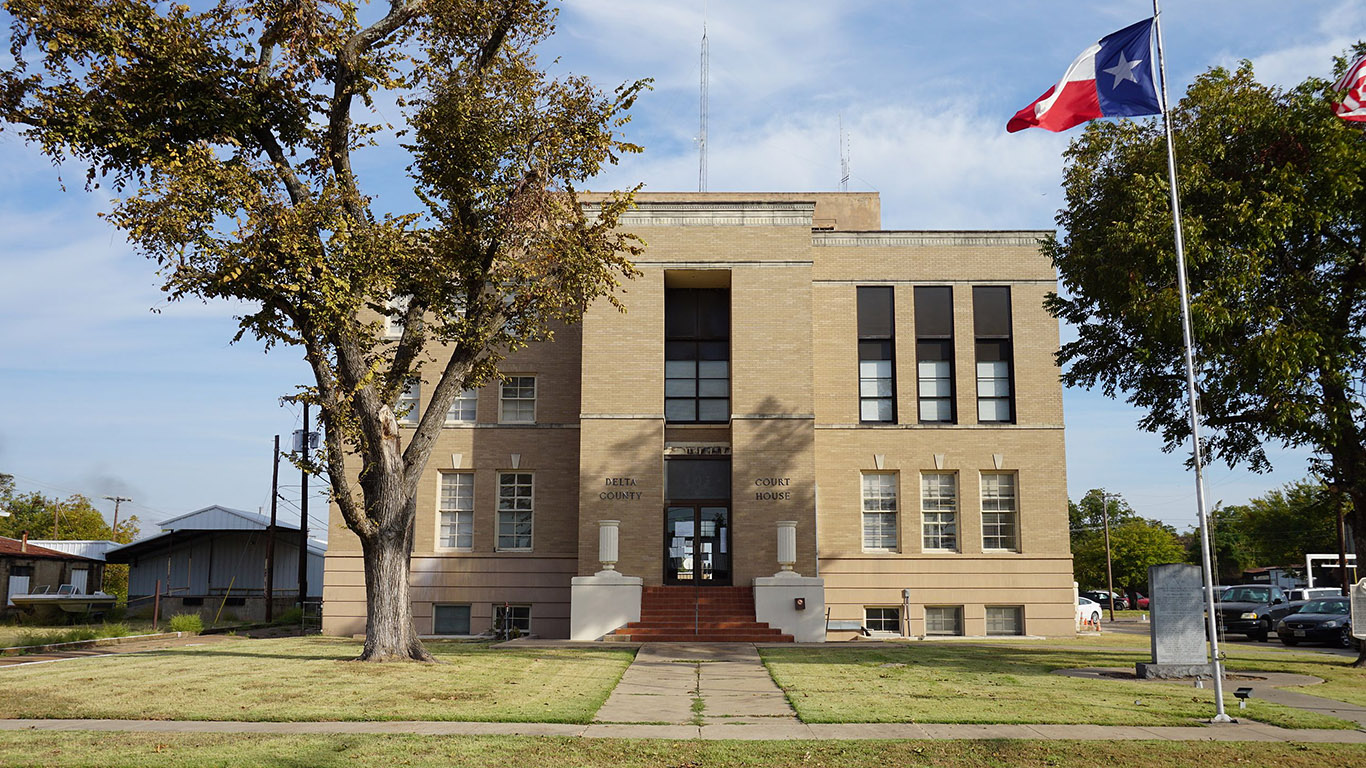
27. Jot ‘Em Down, Texas
> Municipal status: Unincorporated
> Population: 10
This unincorporated community has also been known at various times as Mohegan, Muddig Prairie, and Bagley. Jot Em Down (or Jot ‘Em Down, or Jot-Em-Down) is a reference to the store in the old “Lum & Abner” radio comedy series. A local resident, Dion McDonald, opened a real store in town in 1936 and gave it that name, and the town later adopted it.
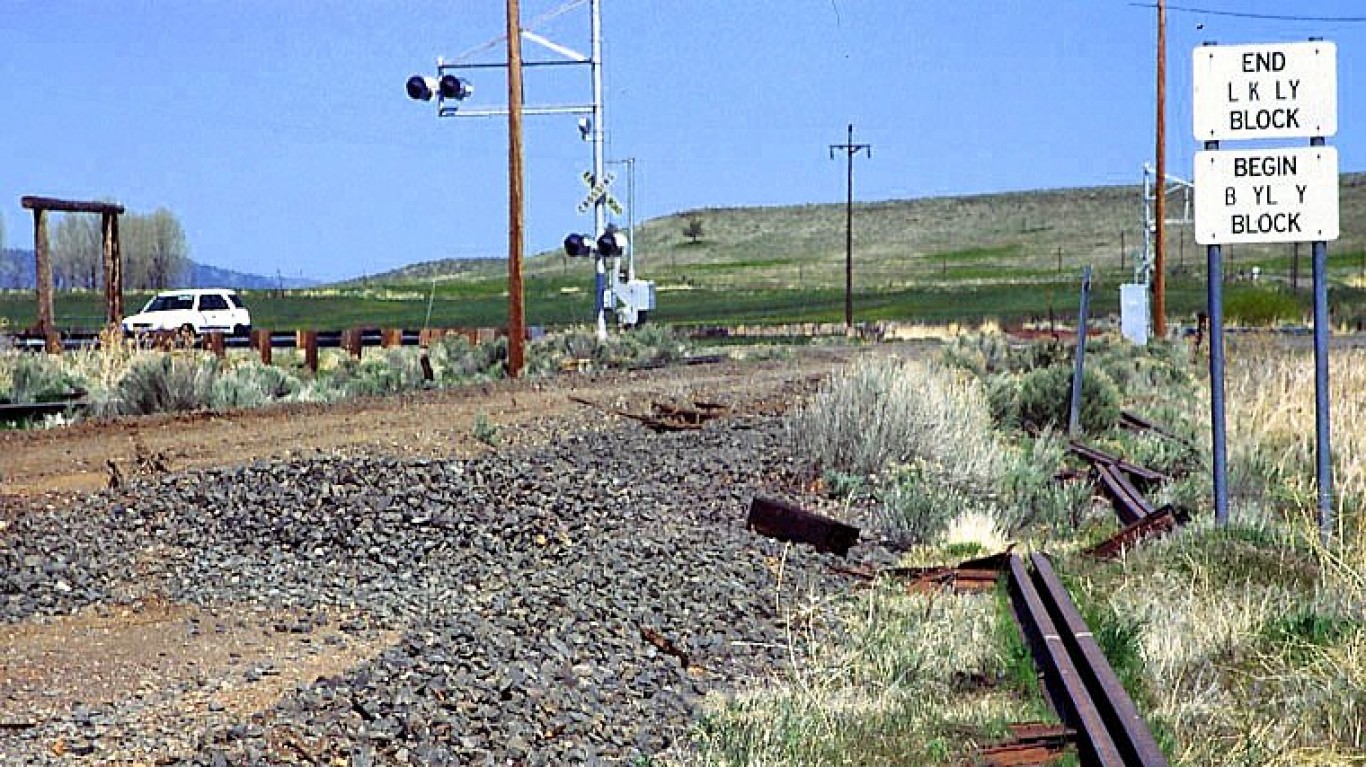
28. Likely, California
> Municipal status: Census designated place
> Population: 12
In 1878, locals were asked to find a new name for their post office, after the Post Office Department rejected its old name, South Fork. They suggested three alternatives, each of which was turned down because they duplicated names of other post offices elsewhere in California. When somebody remarked that they would likely never find a name, somebody else supposedly spoke up and said, “It is not likely that there will be another post office in the state called ‘Likely.’” They submitted that, and it was accepted.
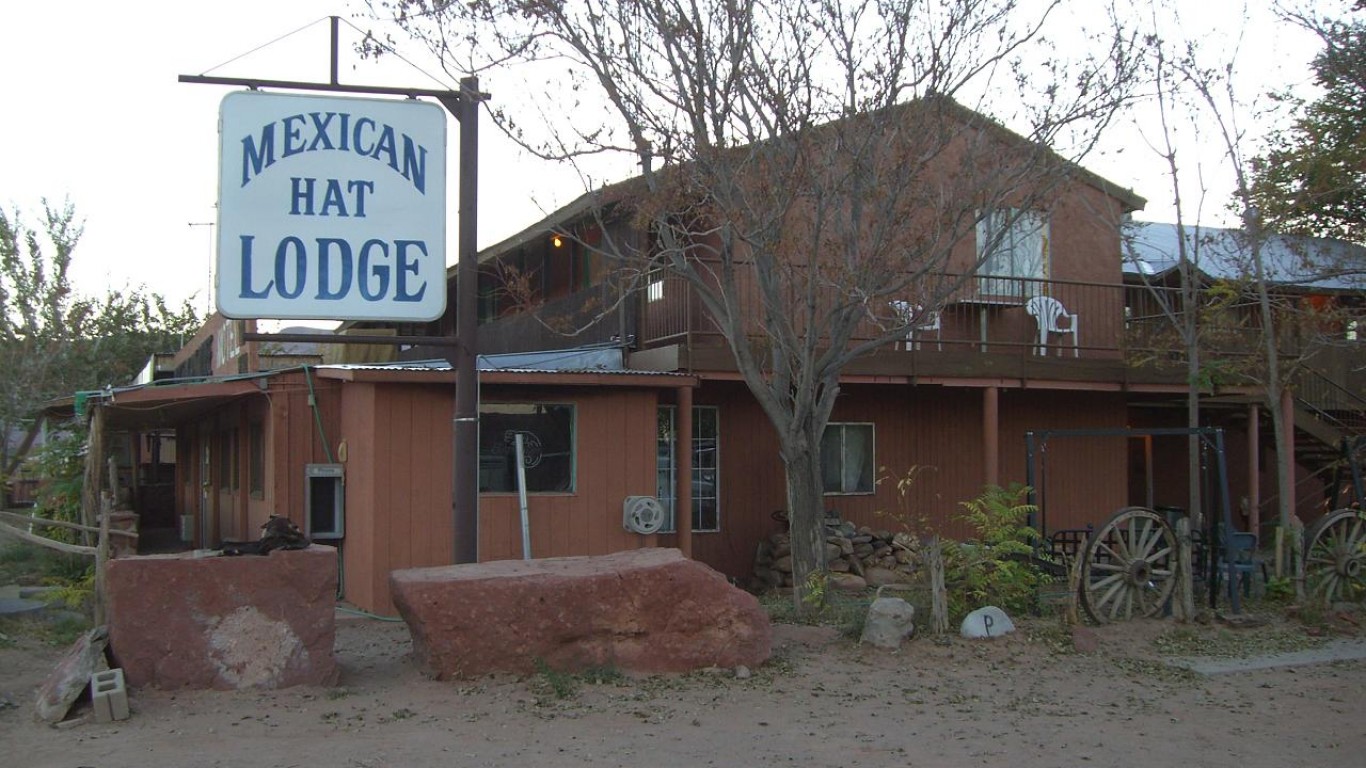
29. Mexican Hat, Utah
> Municipal status: Census designated place
> Population: 11
Founded by an oil speculator in 1908, this community is named for a rock formation about two-and-a-half miles to the northeast that is thought to resemble, from certain angles, a sombrero — a Mexican hat.
[in-text-ad-2]
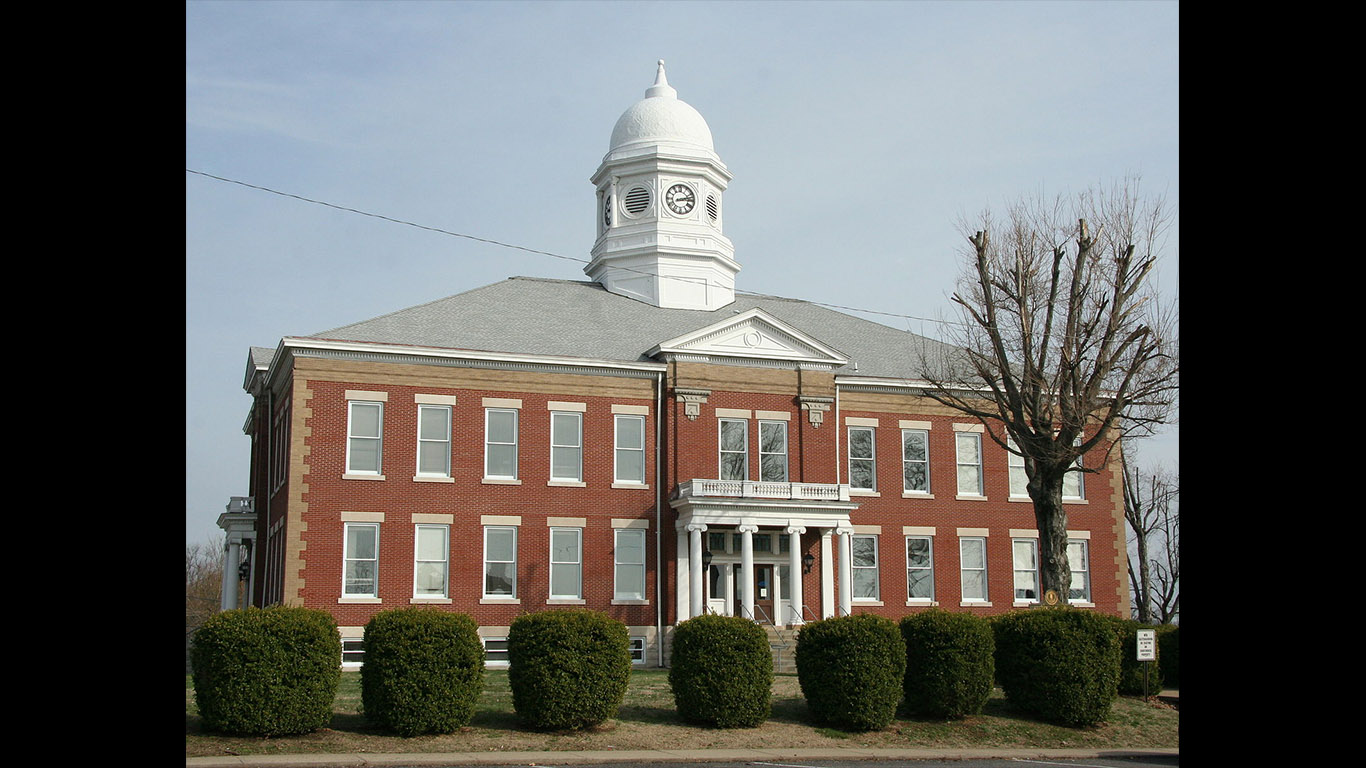
30. Monkeys Eyebrow, Kentucky
> Municipal status: Unincorporated
> Population: 100
According to its unofficial historian, Joe Culver, a former U.S. Department of Energy public relations man, this community’s name is sometimes rendered as Monkey’s Eyebrow or Monkey Eyebrow. He reports that there are several stories about why it got called that, but his preferred version is that western Kentucky vaguely resembles the profile of a simian’s face, partially outlined by the Ohio River — and Monkeys Eyebrow sits where, well, the monkey’s eyebrow would be.
Methodology:
In order to identify the 30 strangest town names in America, 24/7 Tempo reviewed the nearly 30,000 names of cities, towns, villages, boroughs, and CDPs (census-designated places — settled but unincorporated population centers as defined by the U.S. Census Bureau), collected by the U.S. American Community Survey. We then used our best judgment to identify the most unusual among them.
To help narrow our search, we used four criteria. The first group comprises towns with names that occur only once in the United States and do not consist of discrete words in the English language. For example, Ho-Ho-Kus, New Jersey, is both the only town with that name and a word (or series of words) not found in the dictionary.
The second group is composed of town and place names that are discrete words not expected to be used as town names. For example, the strangeness of the name of Pillow, a town in Pennsylvania, comes not because there’s anything strange about the word “pillow,” but from the unusual choice of using a common noun (though it turns out that it isn’t in this case) to designate a place.
The third and fourth groups consist of names with four or fewer characters as well as names with 20 or more characters as both would likely include examples outside of mainstream naming conventions.
Finally, we used informal sources to add a small number of small unincorporated communities not classed as CDPs, just because they had names (and stories behind those names) that seemed too good to miss.
Are You Ahead, or Behind on Retirement?
If you’re one of the over 4 Million Americans set to retire this year, you may want to pay attention. Many people have worked their whole lives preparing to retire without ever knowing the answer to the most important question: am I ahead, or behind on my goals?
Don’t make the same mistake. It’s an easy question to answer. A quick conversation with a financial advisor can help you unpack your savings, spending, and goals for your money. With Zoe Financial’s free matching tool, you can connect with trusted financial advisors in minutes.
Why wait? Click here to get started today!
Thank you for reading! Have some feedback for us?
Contact the 24/7 Wall St. editorial team.
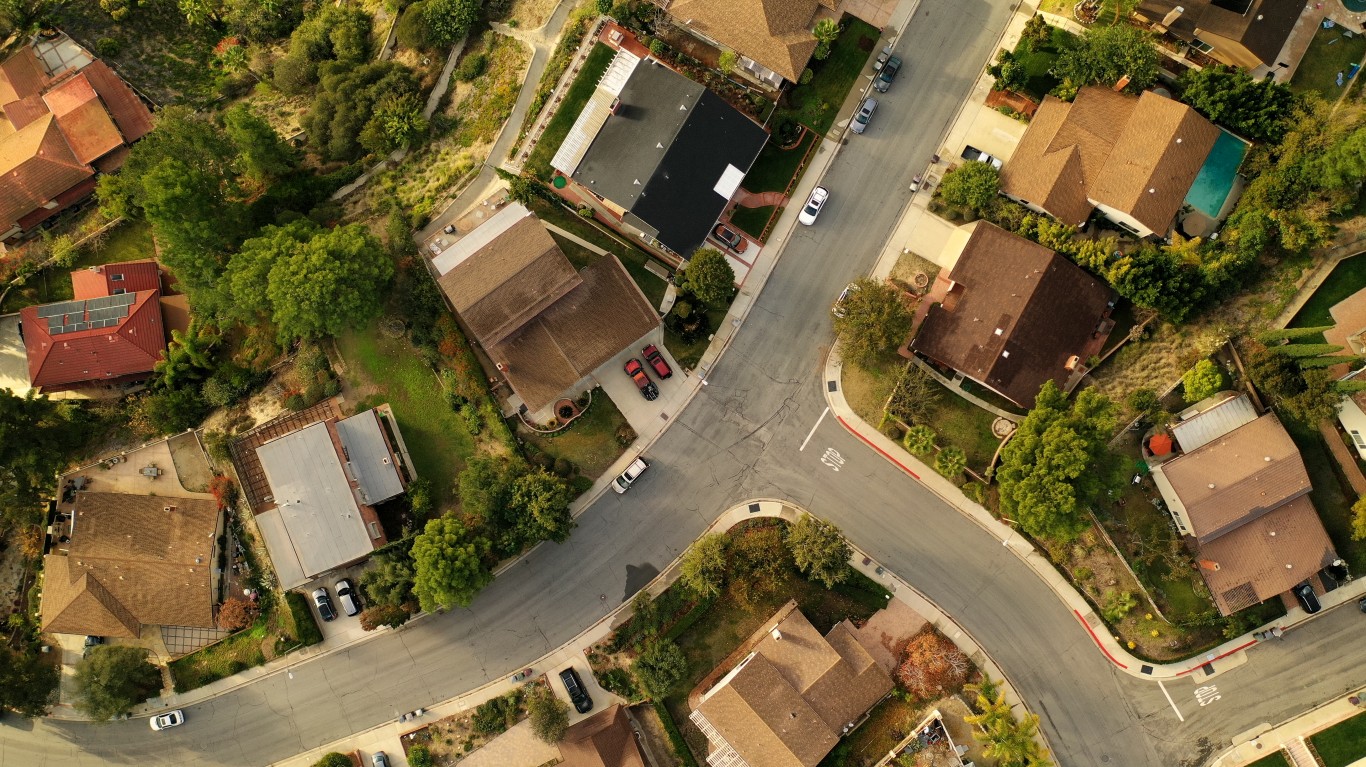 24/7 Wall St.
24/7 Wall St.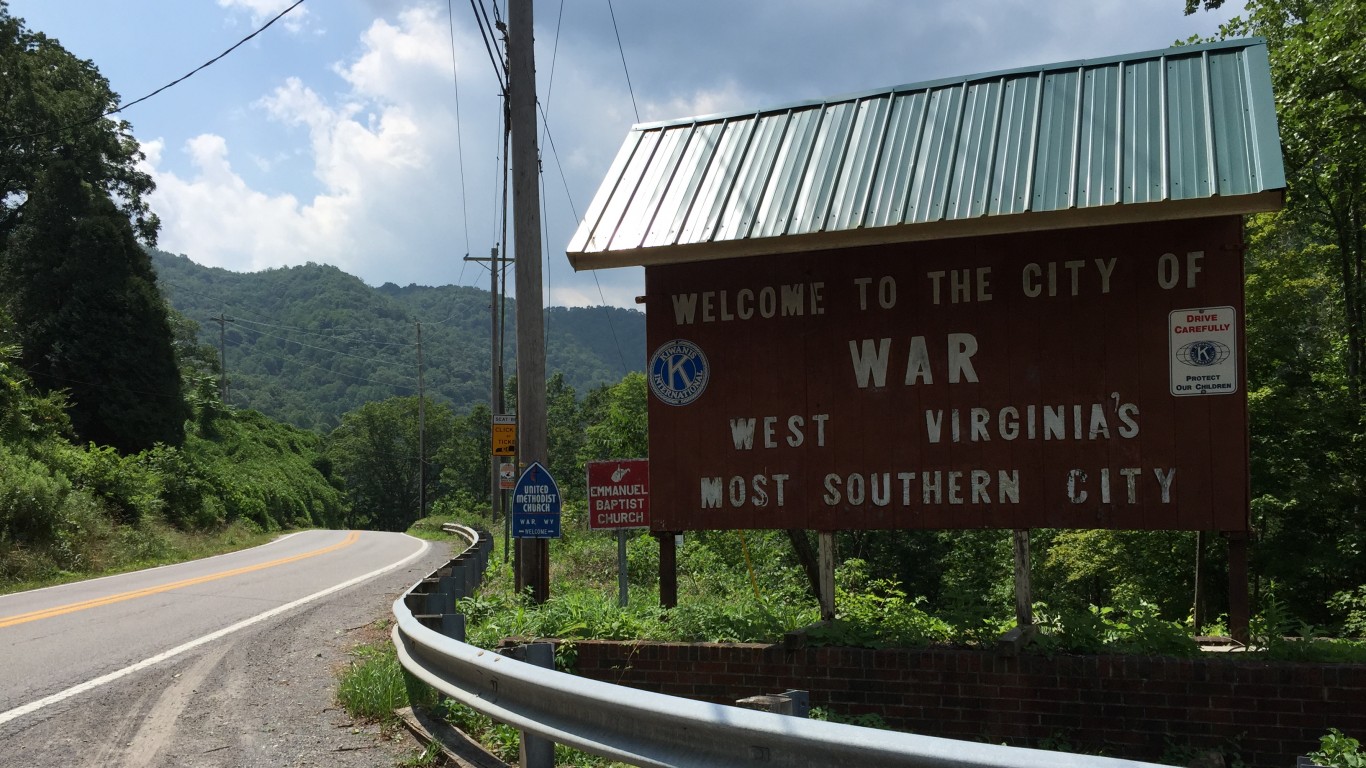 24/7 Wall St.
24/7 Wall St.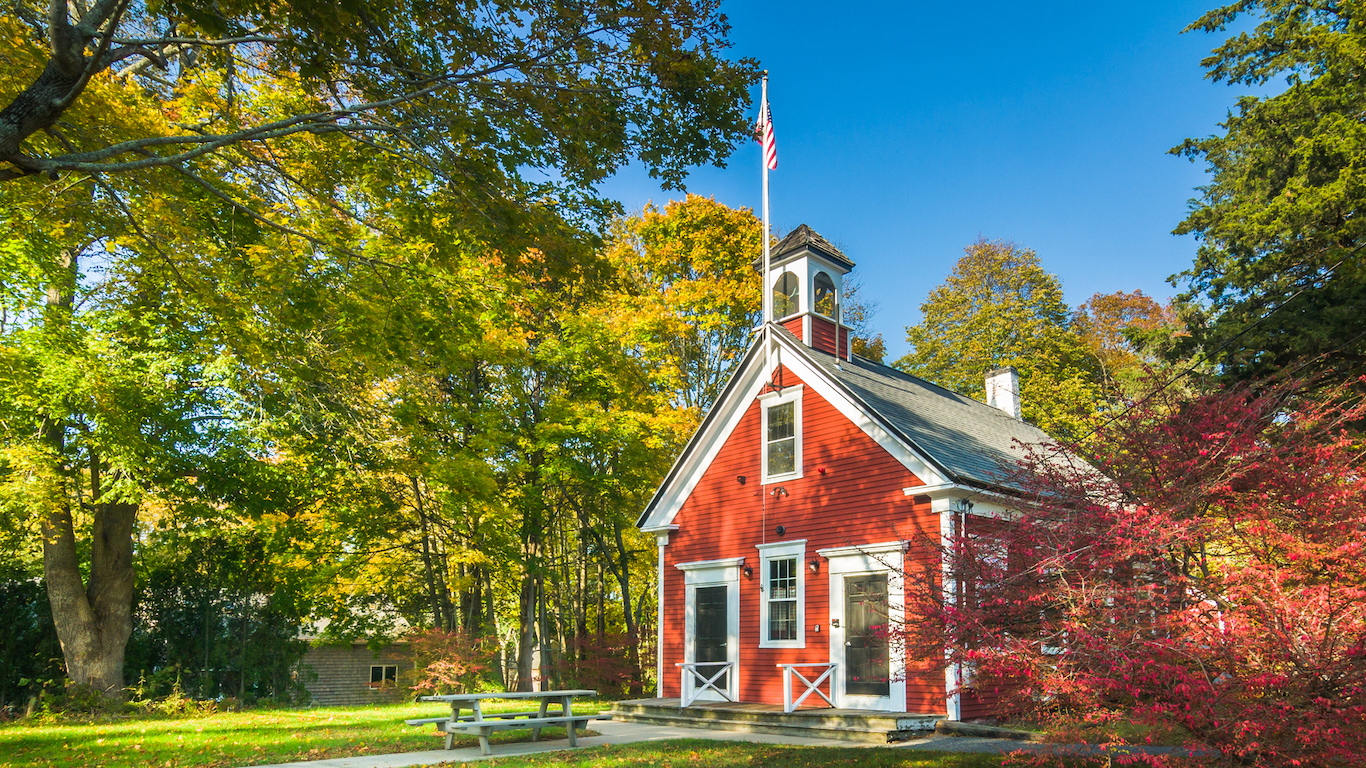 24/7 Wall St.
24/7 Wall St.
